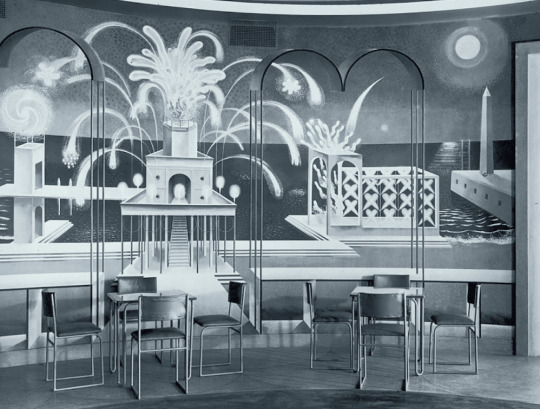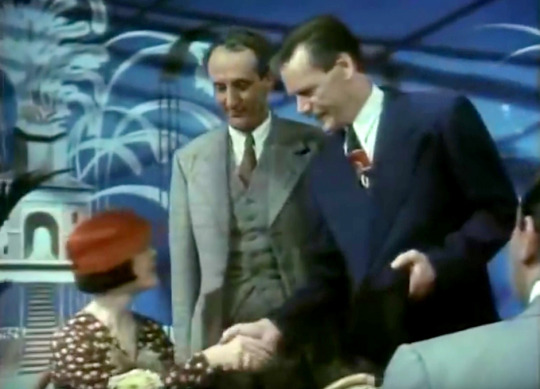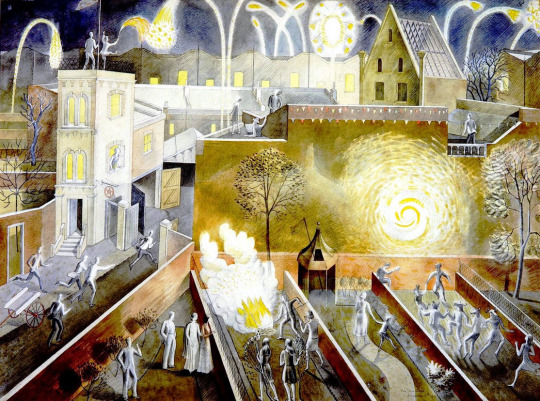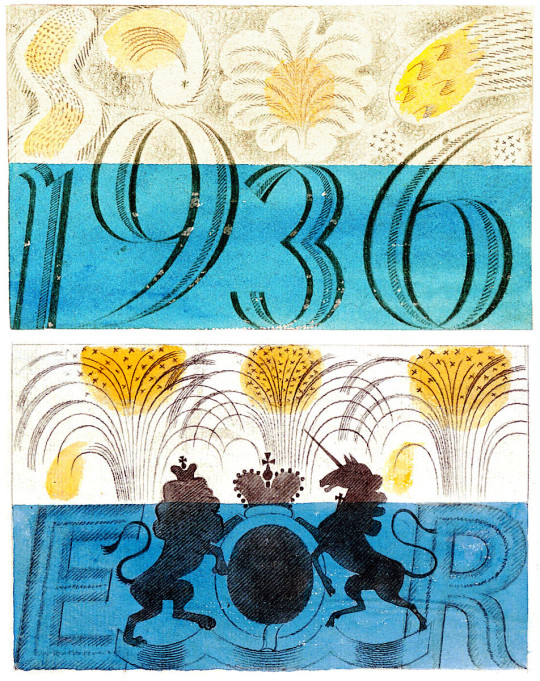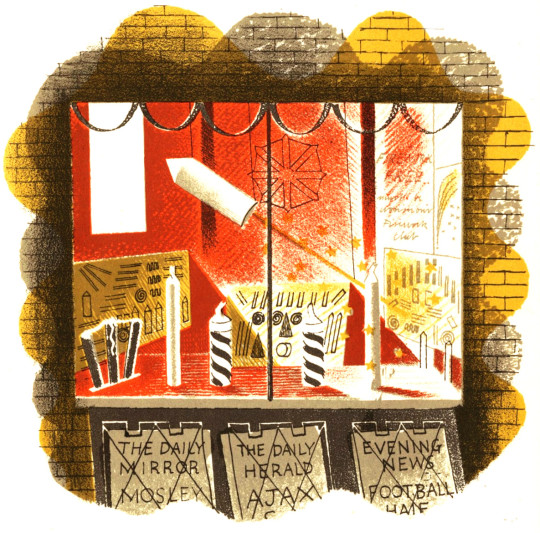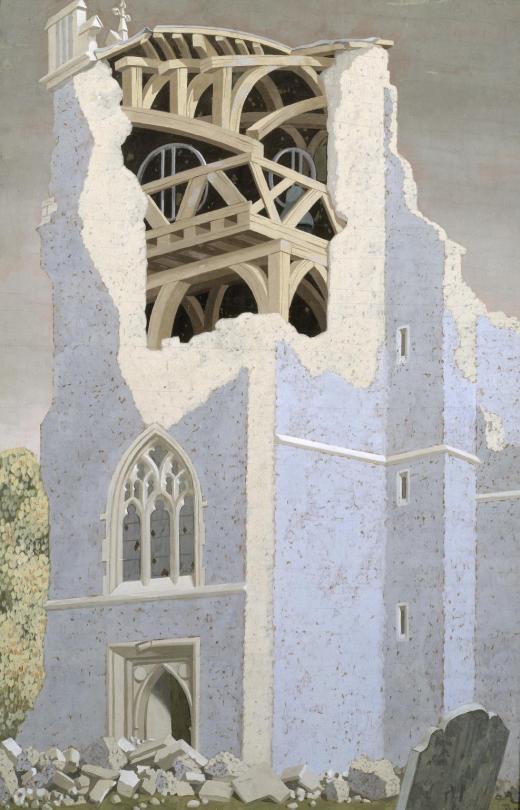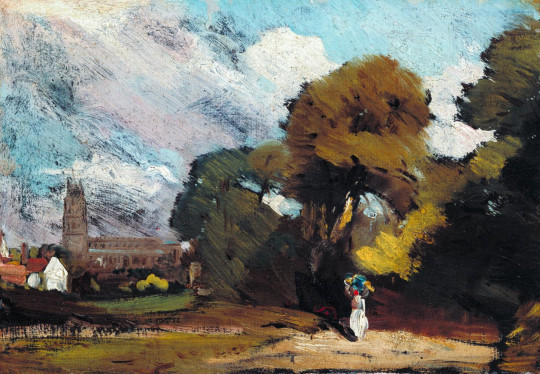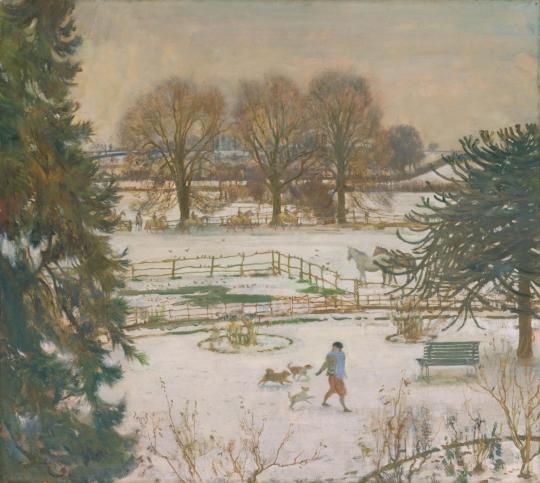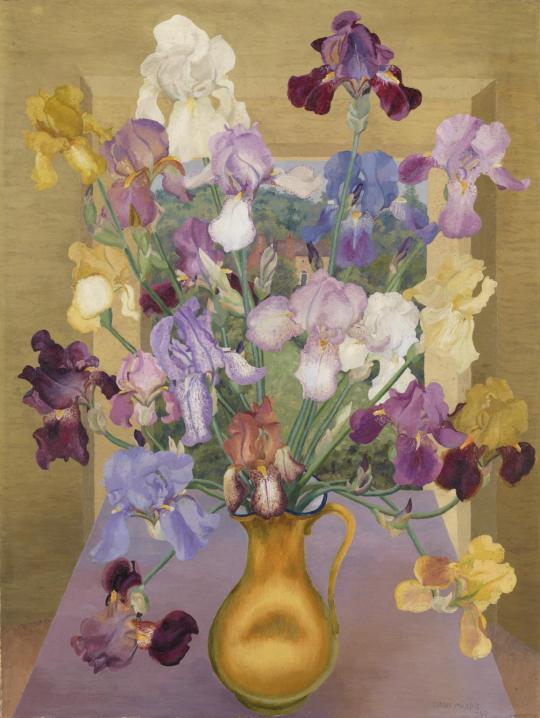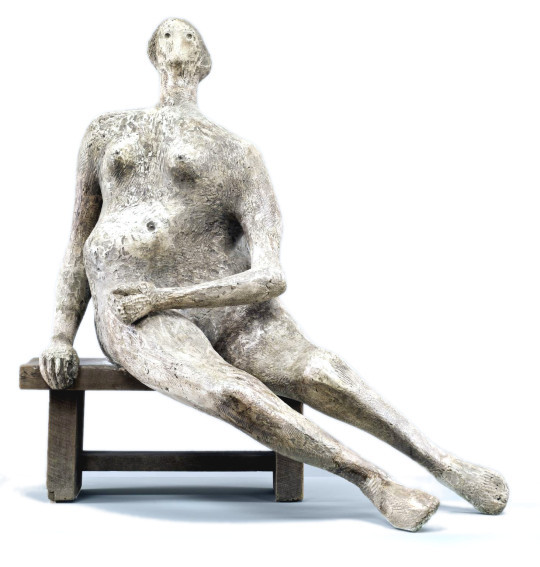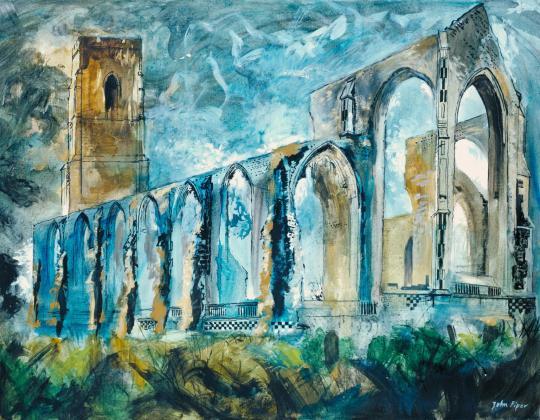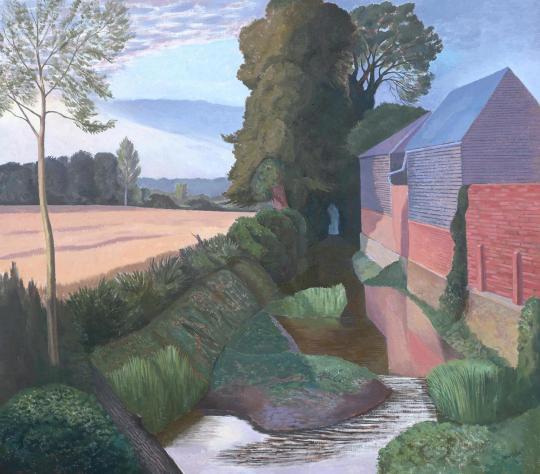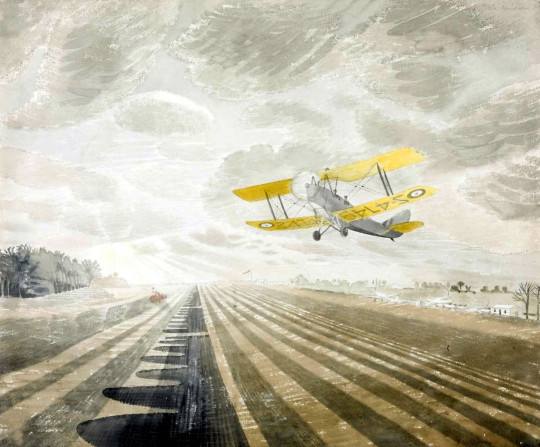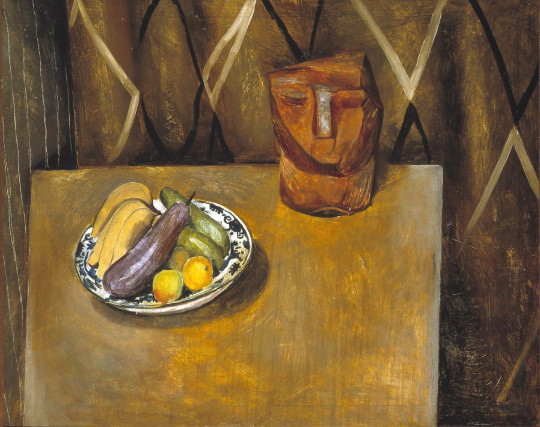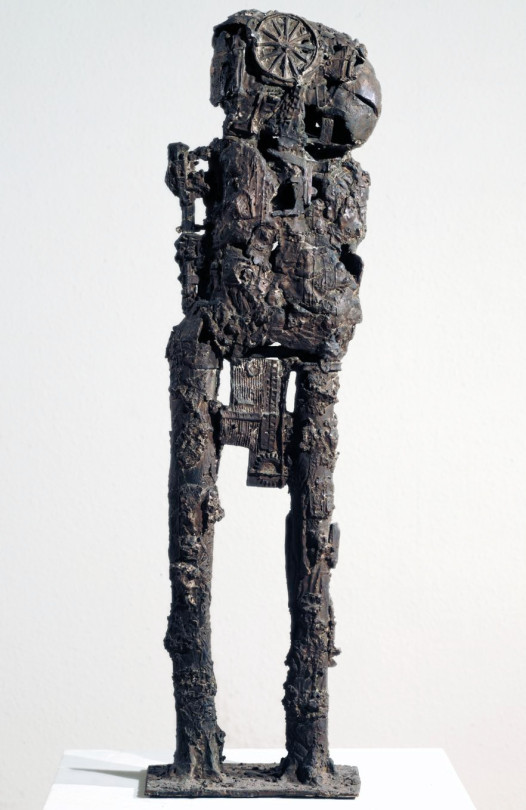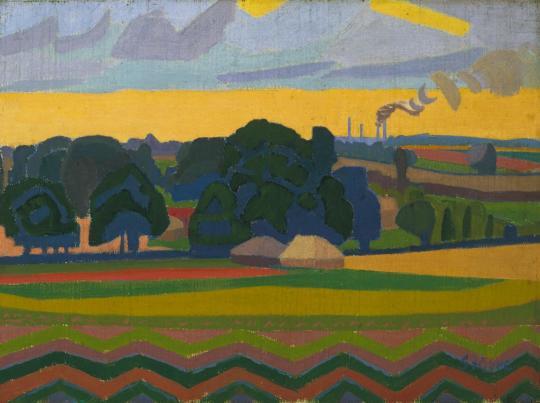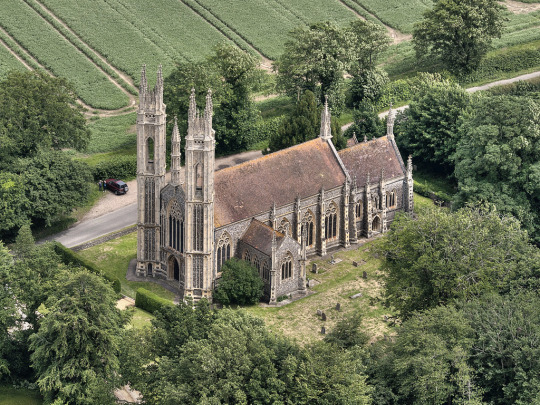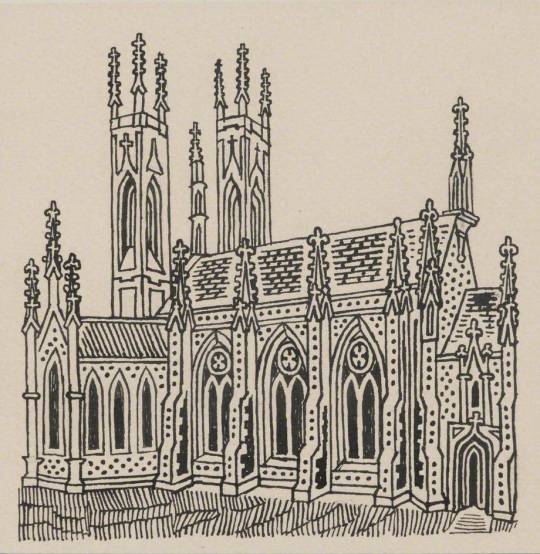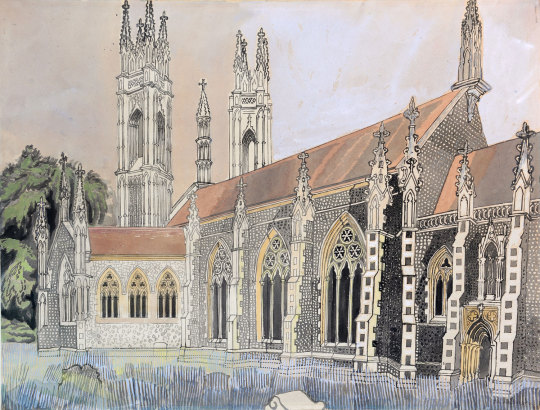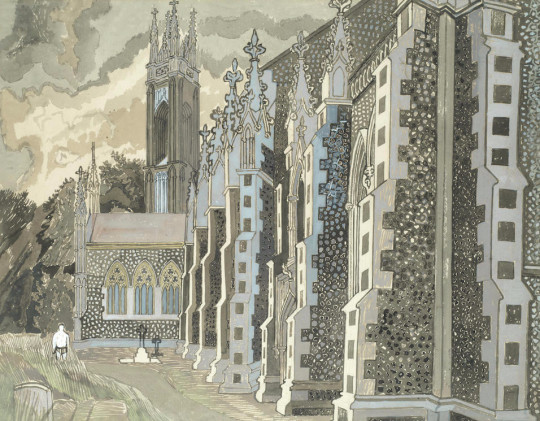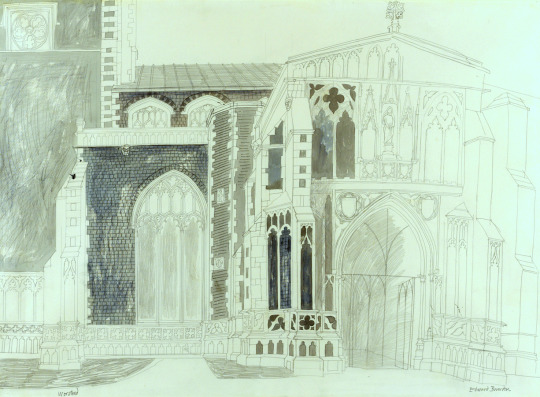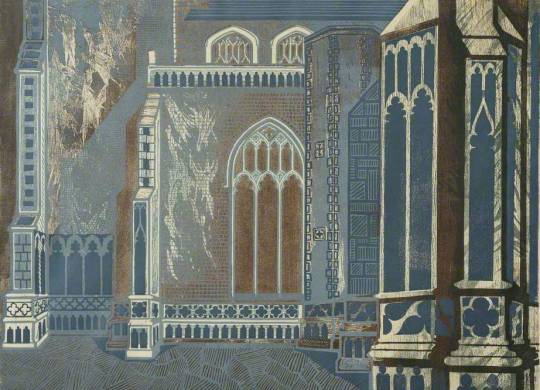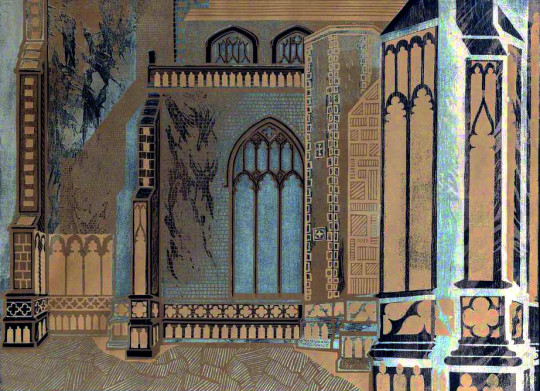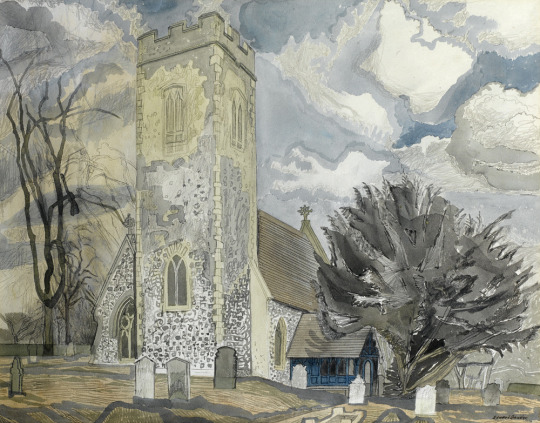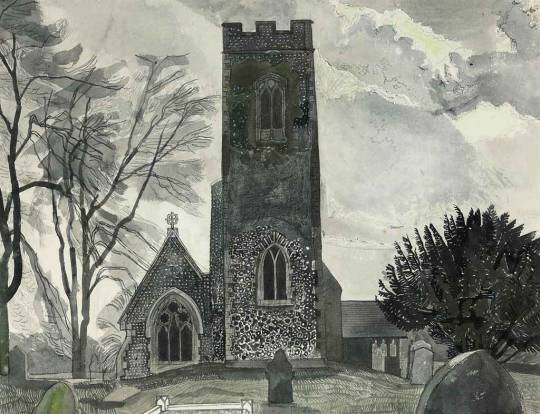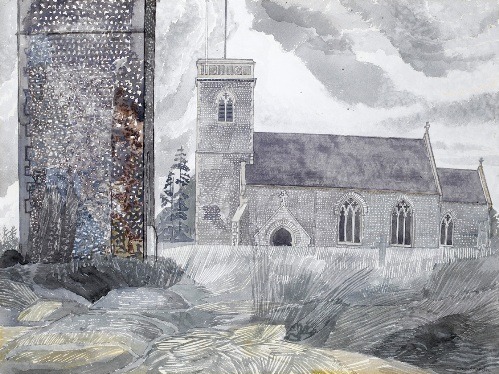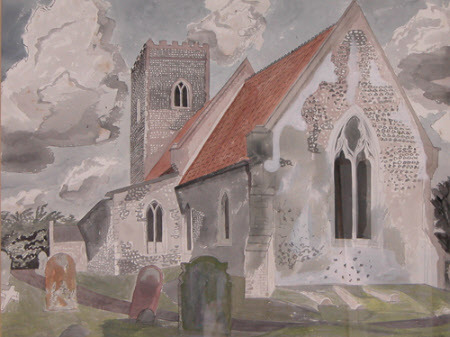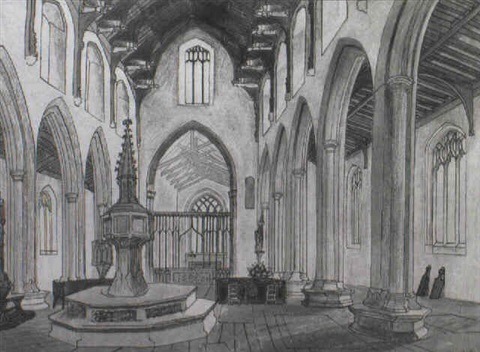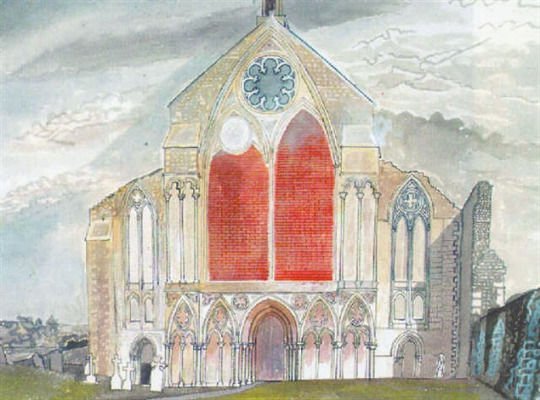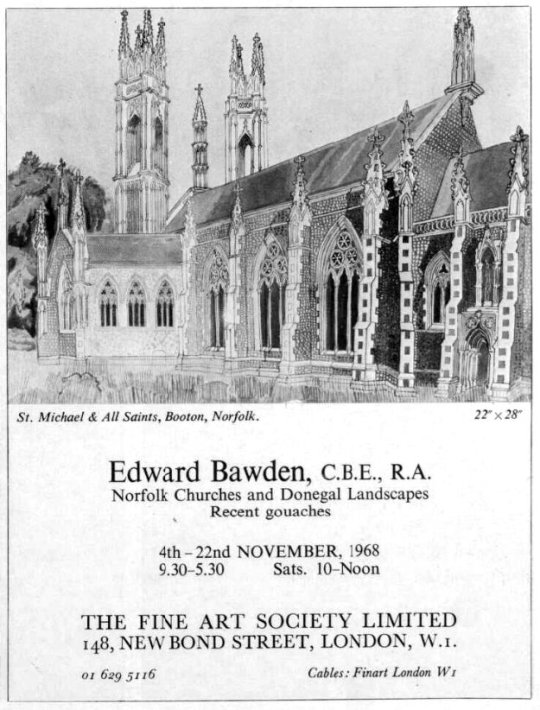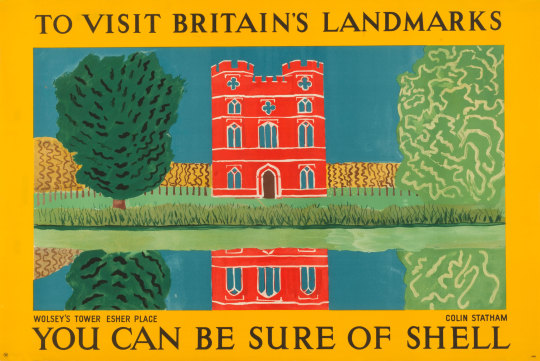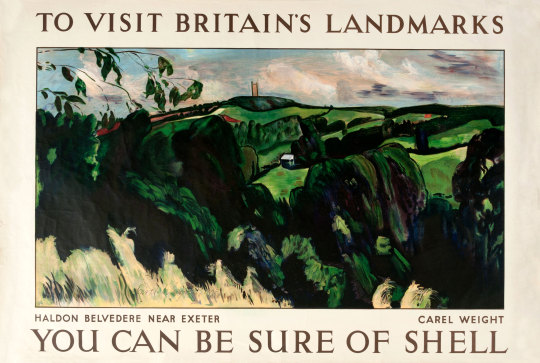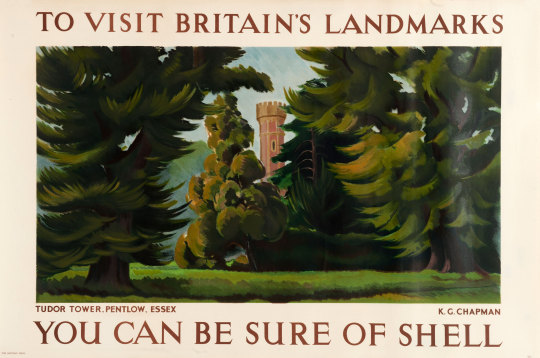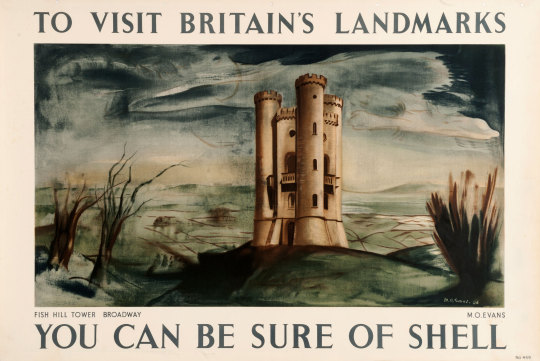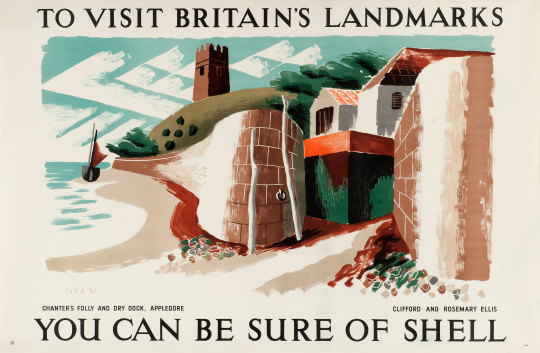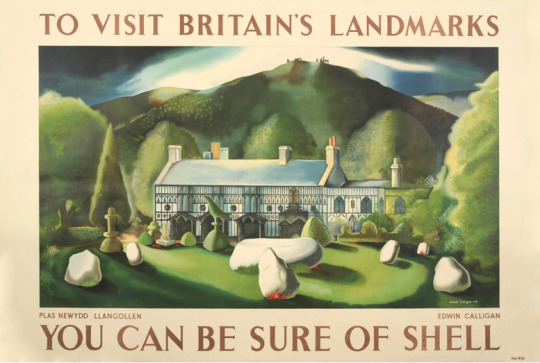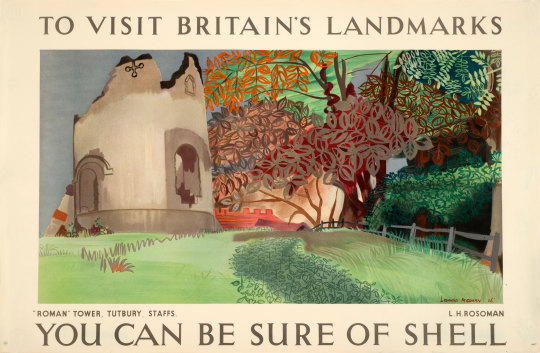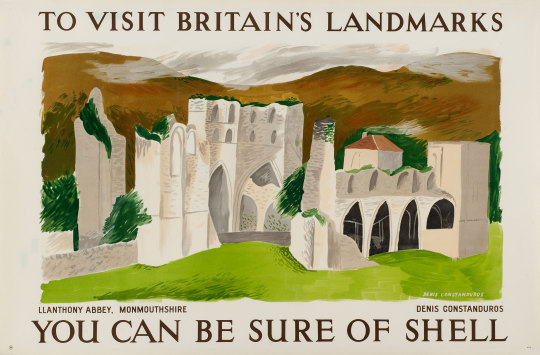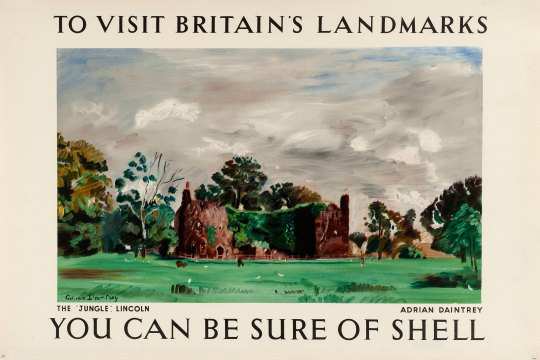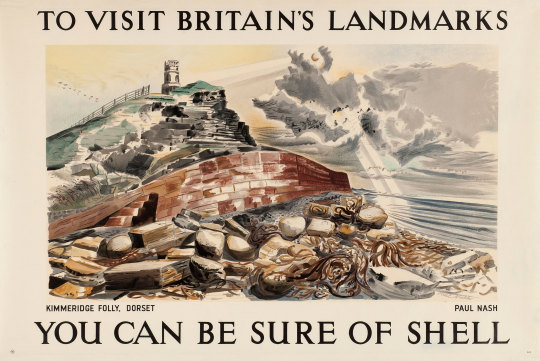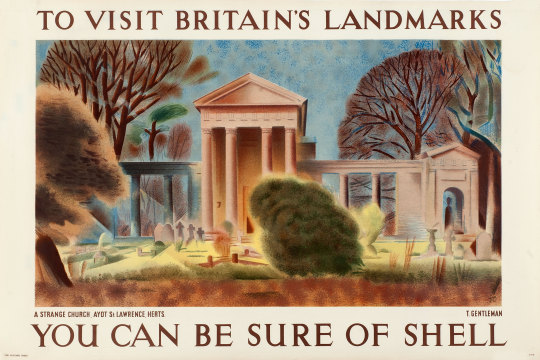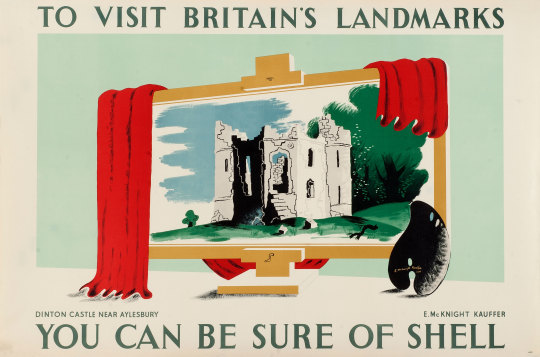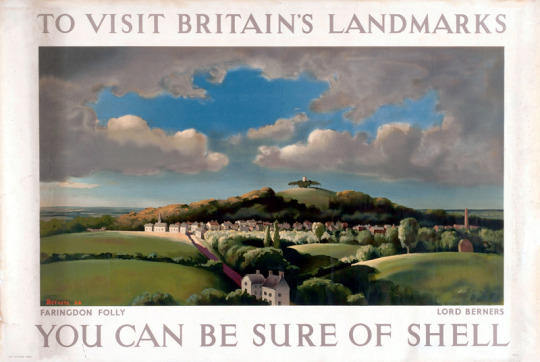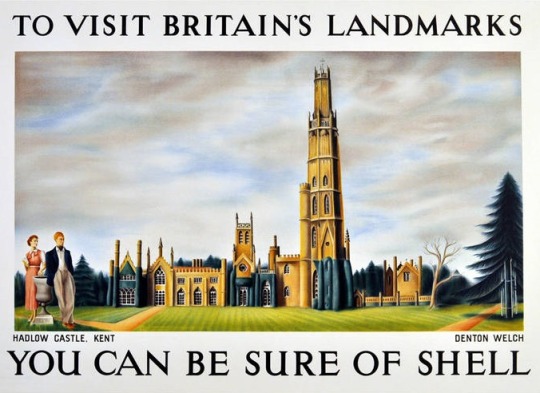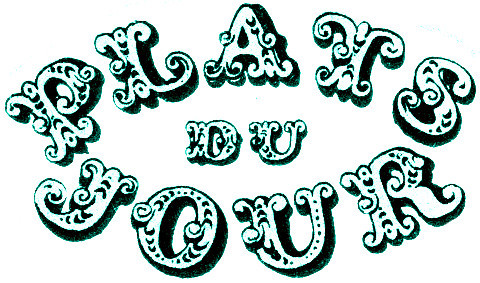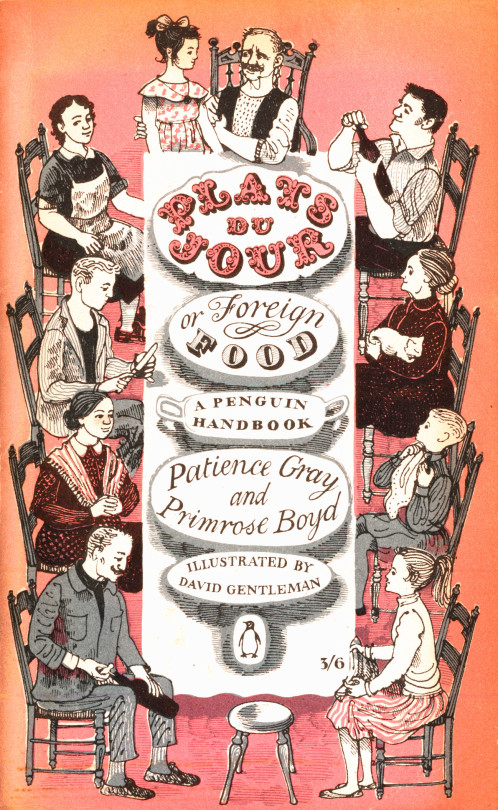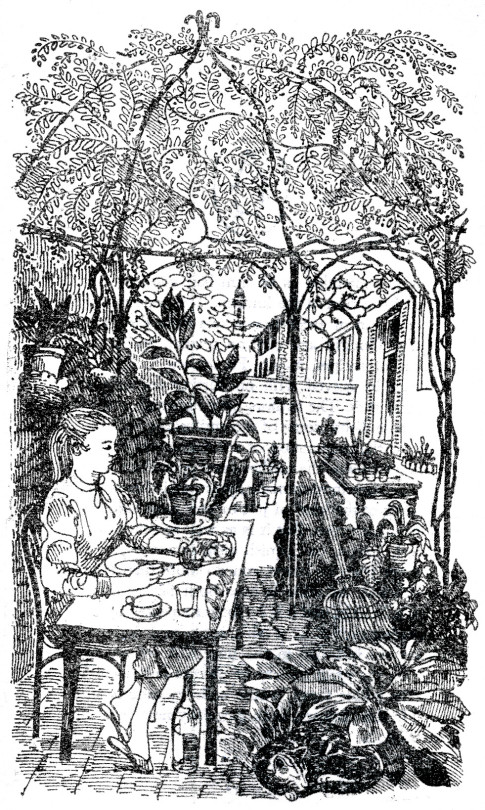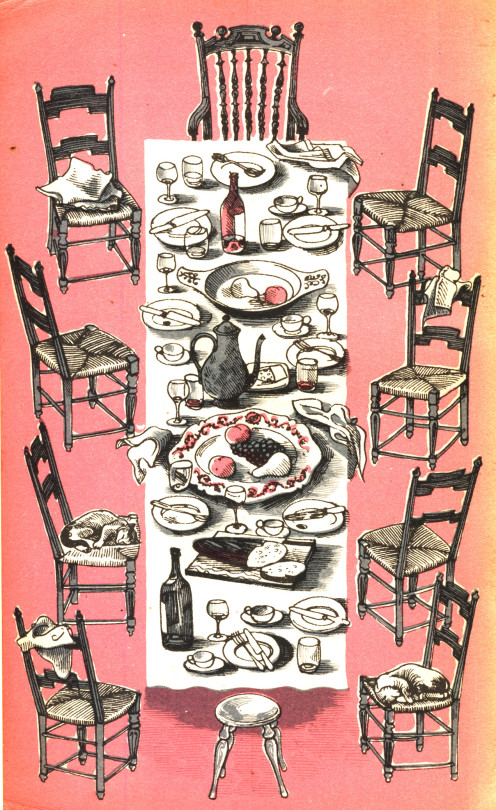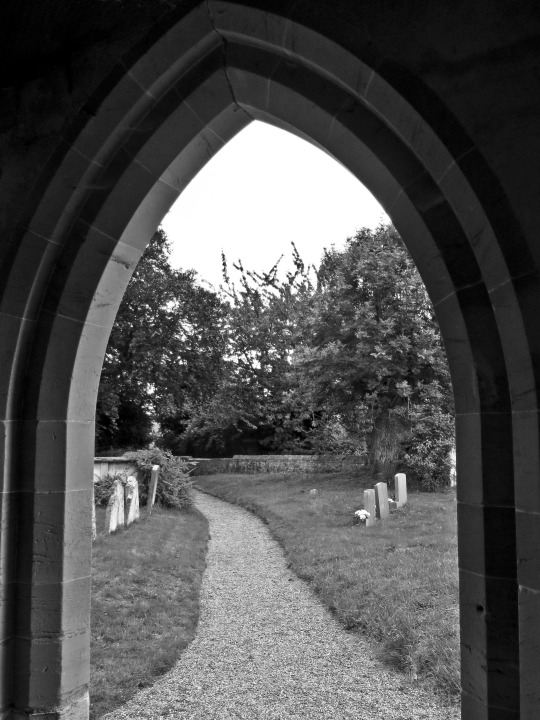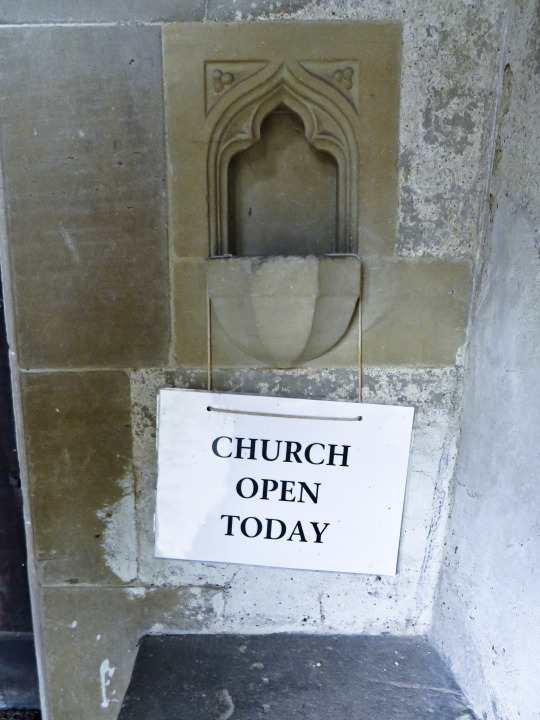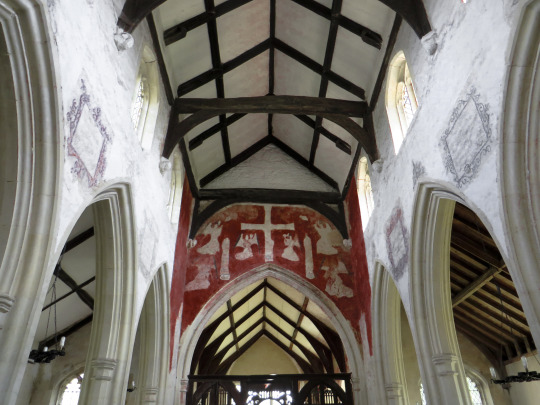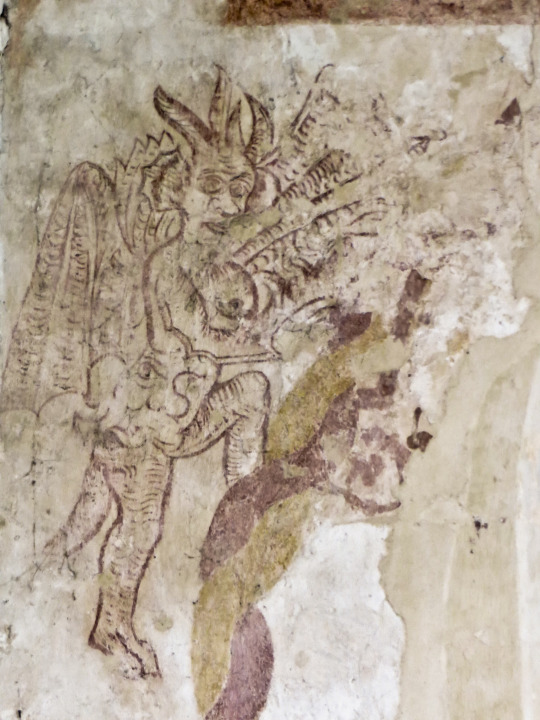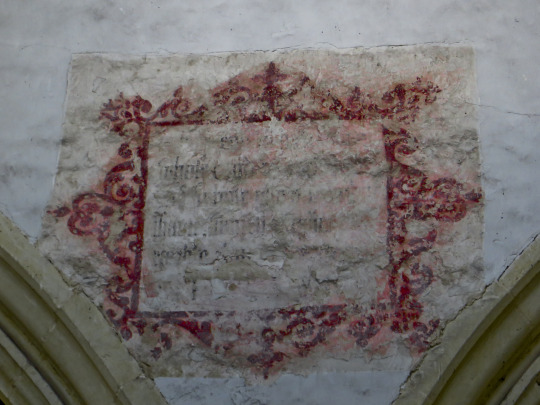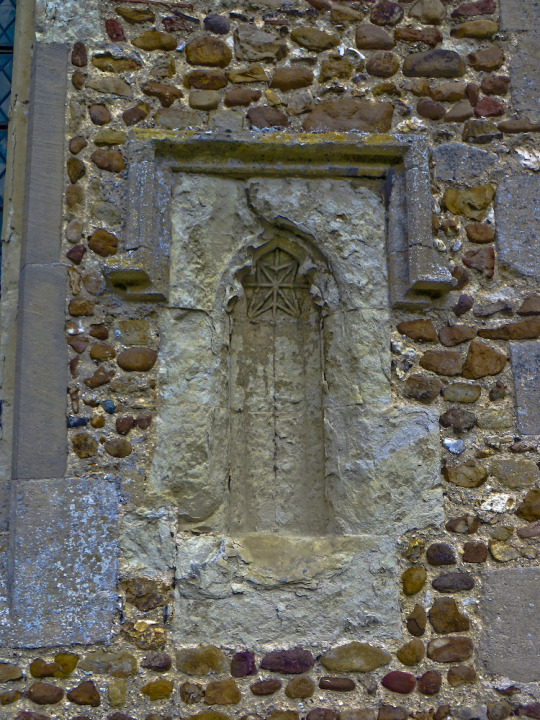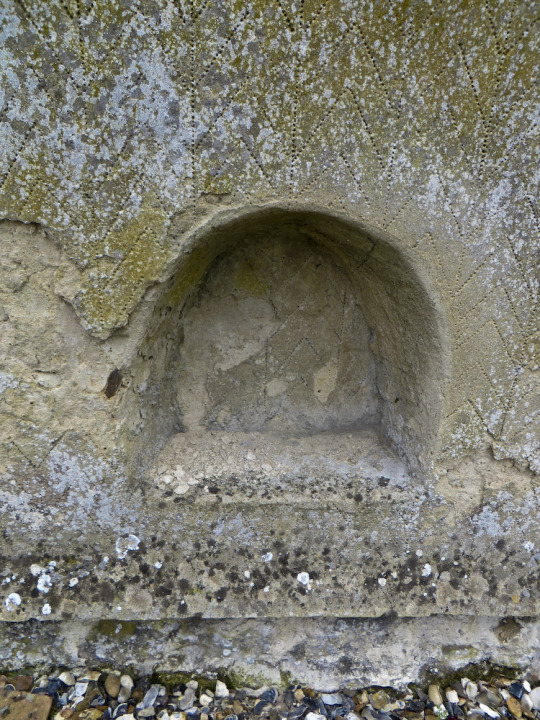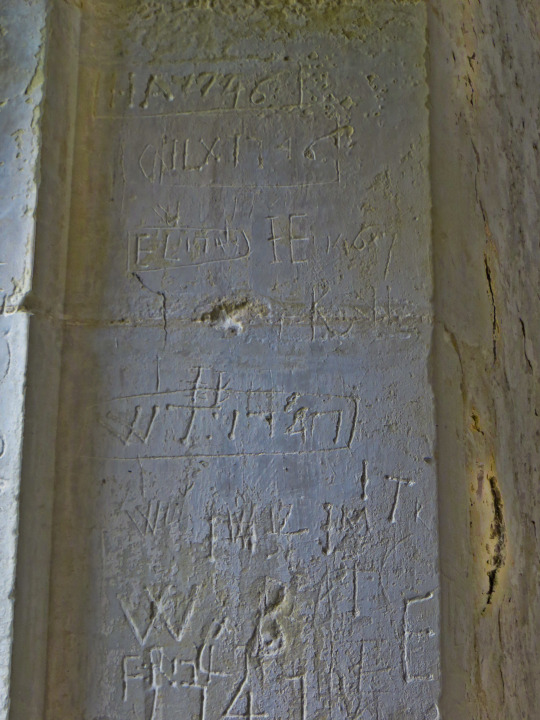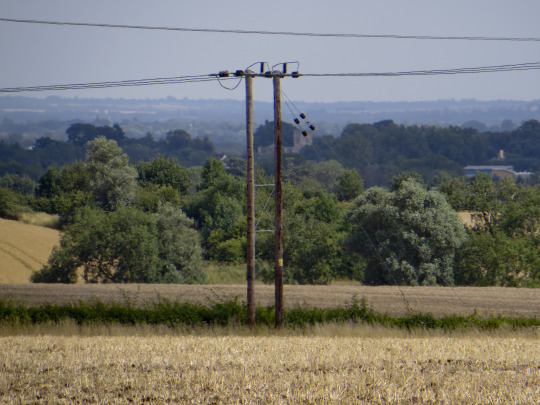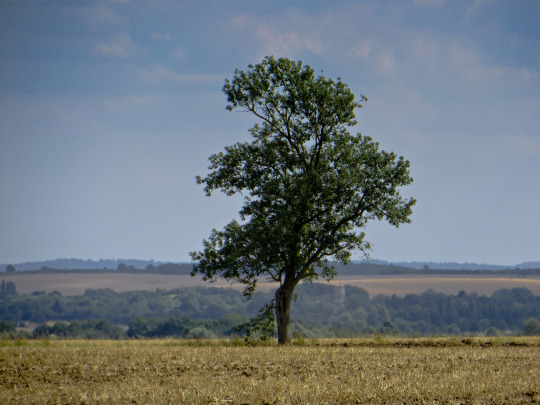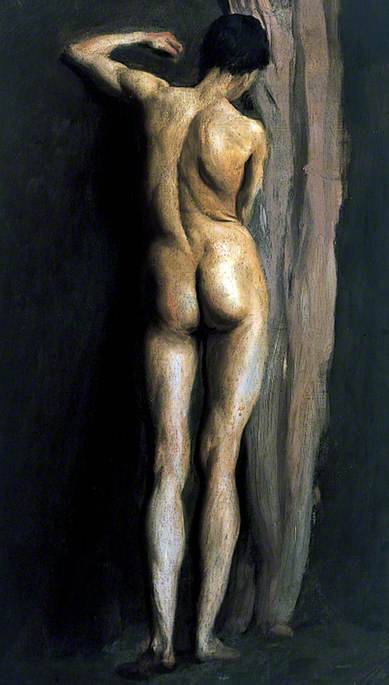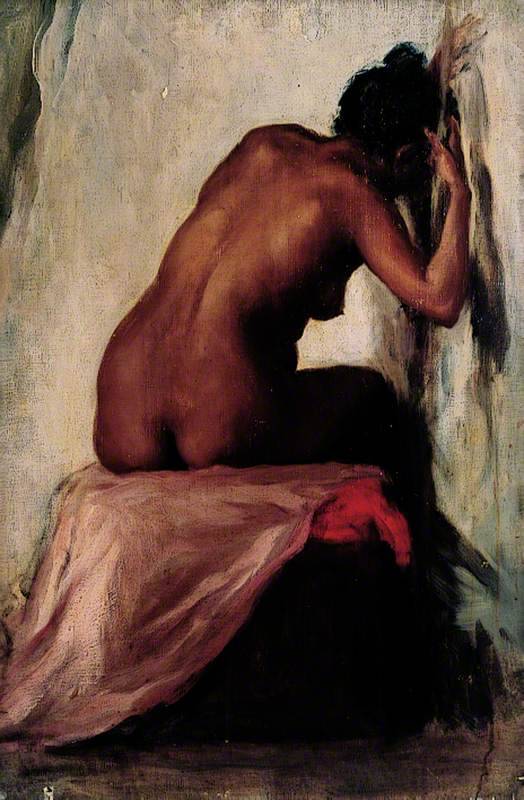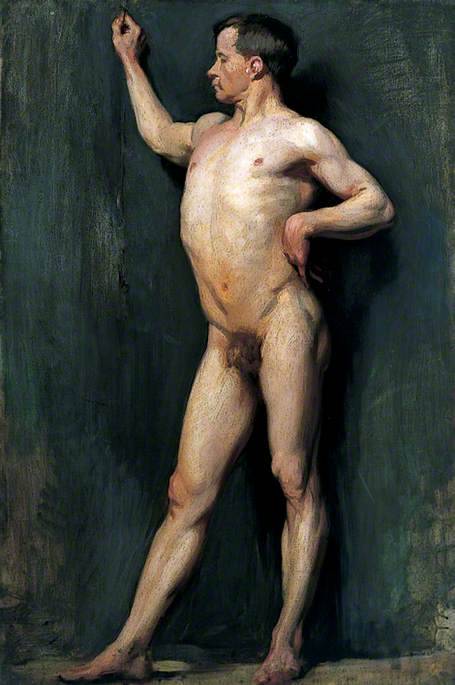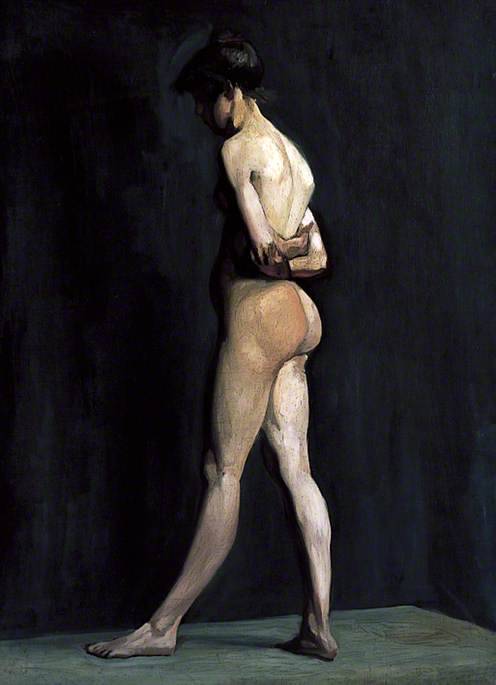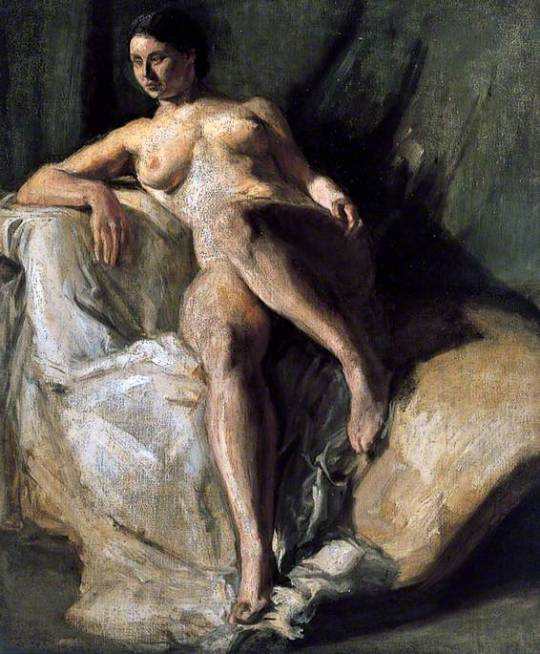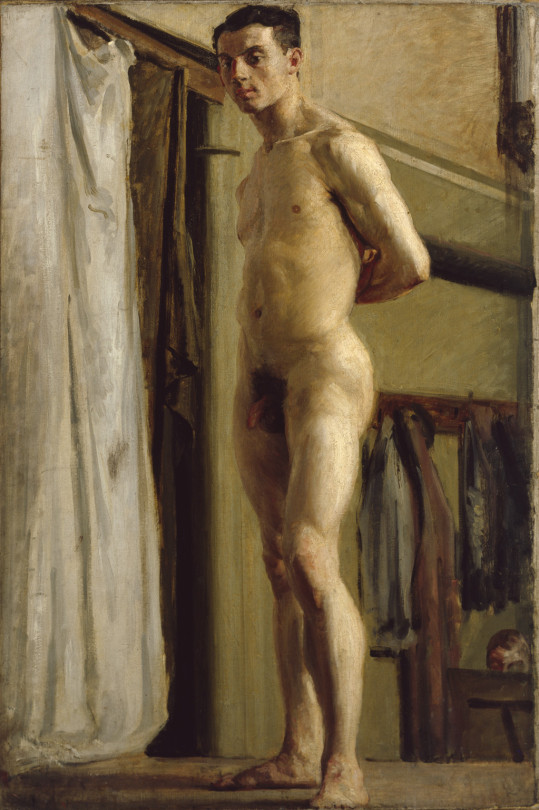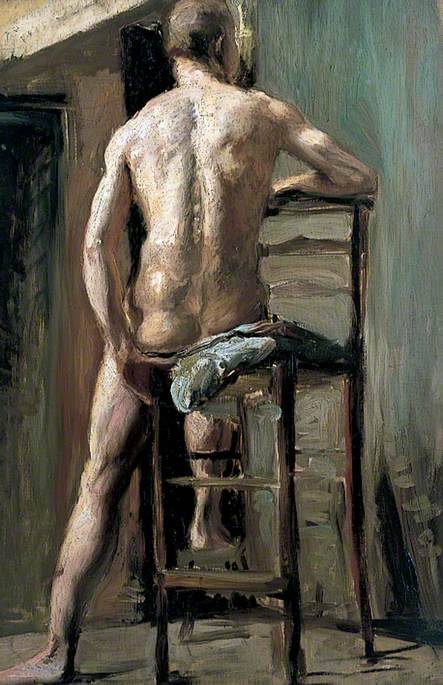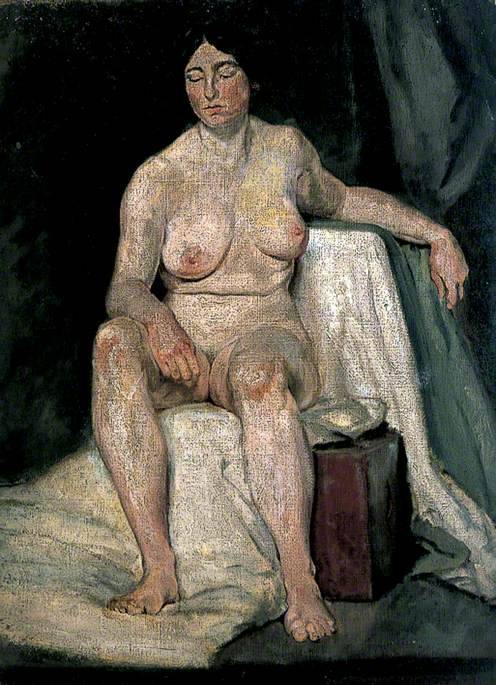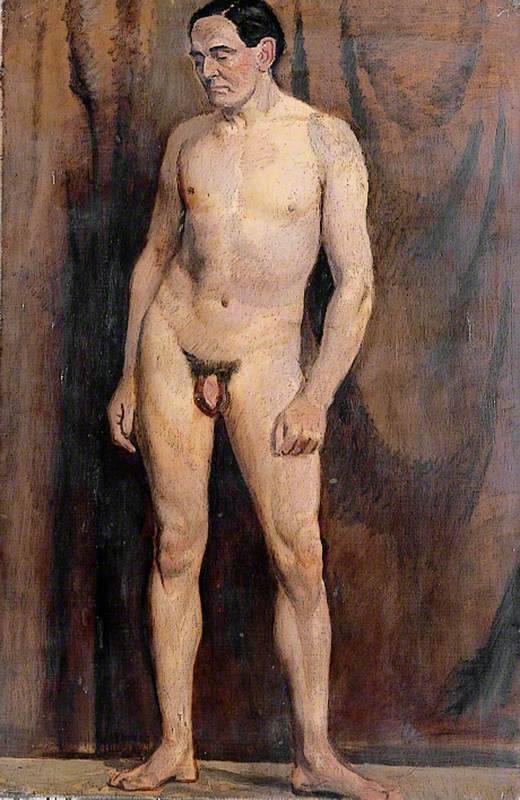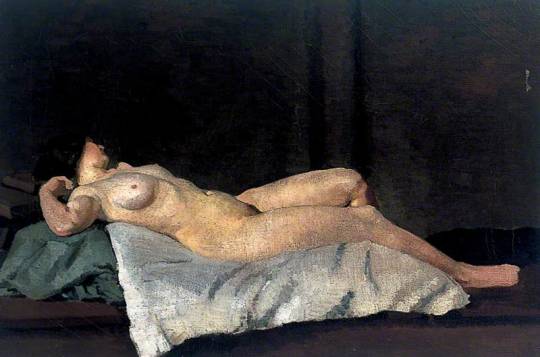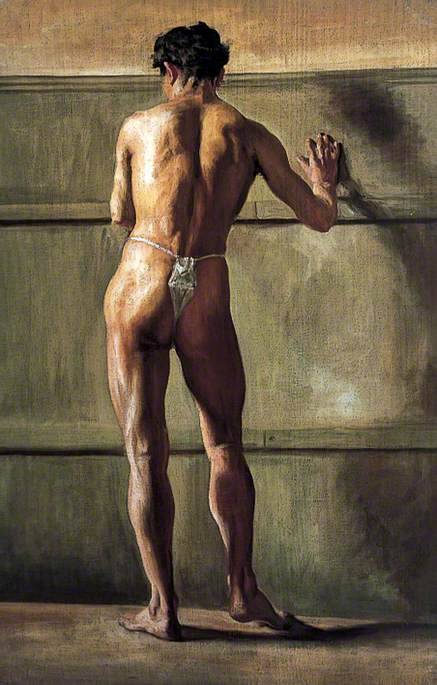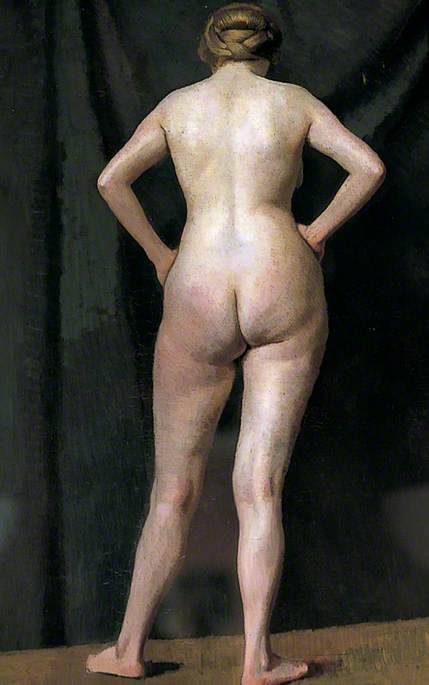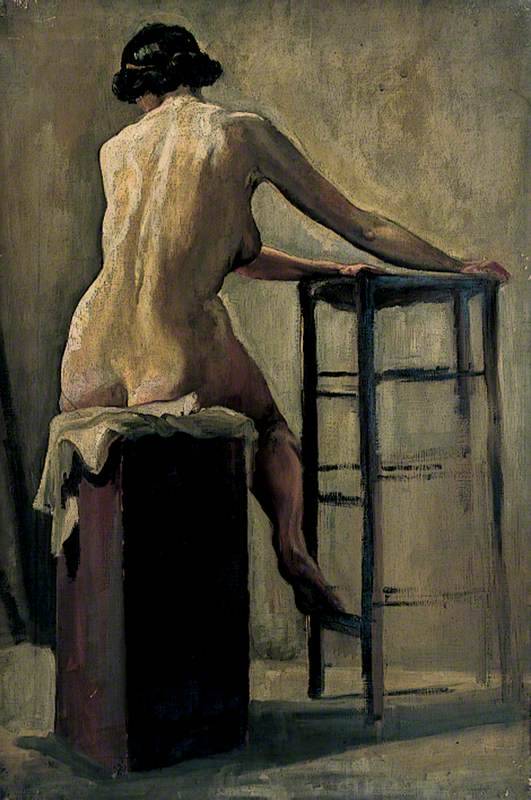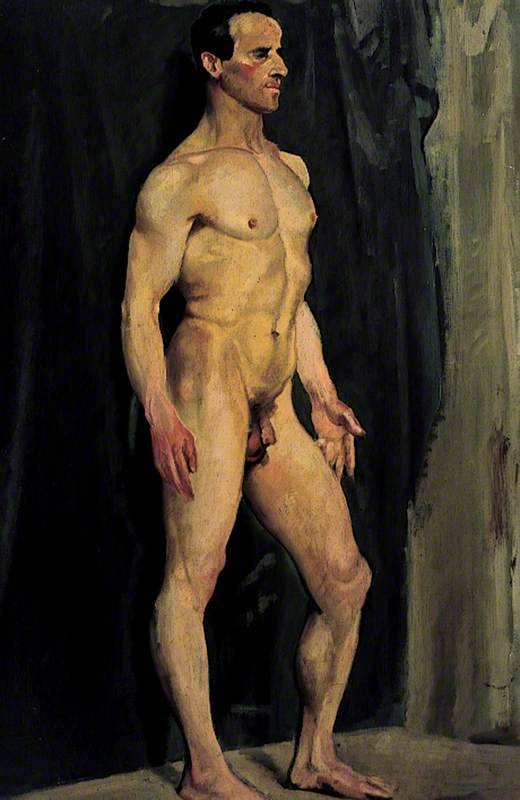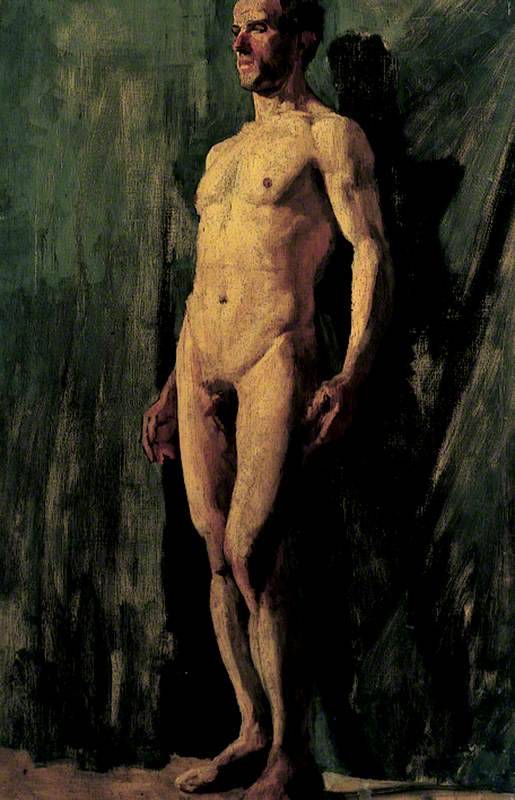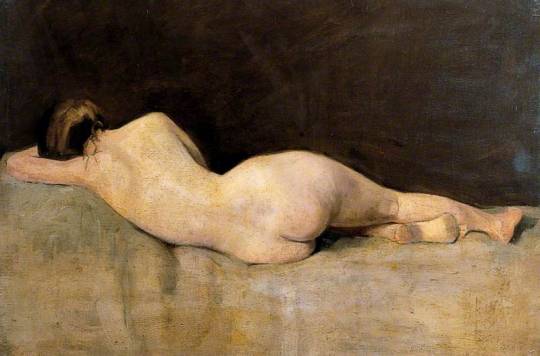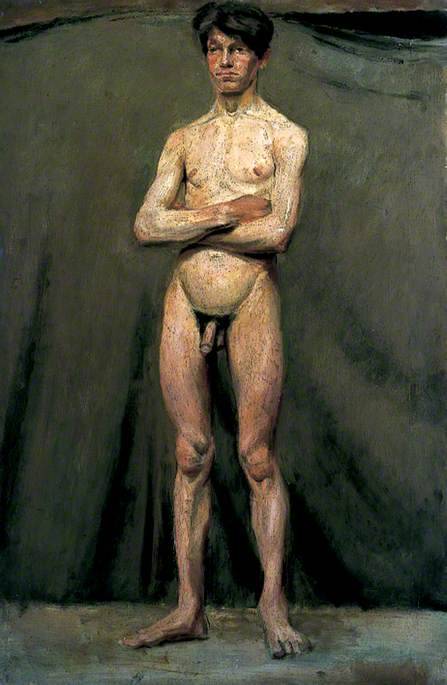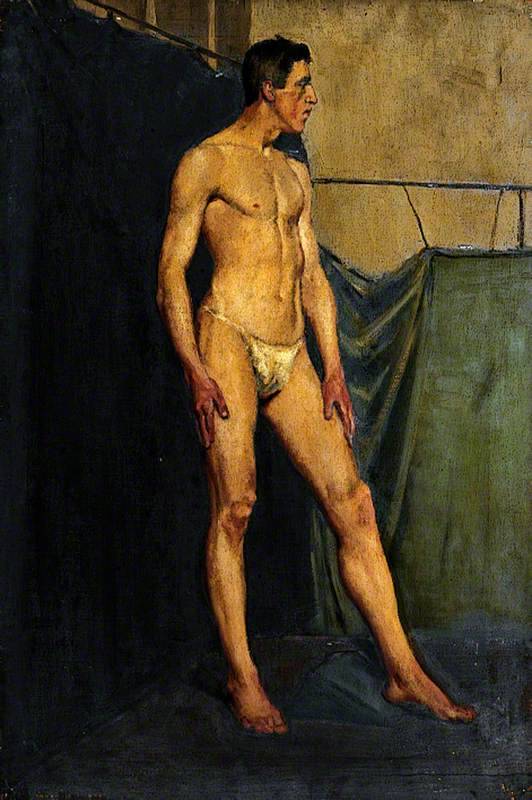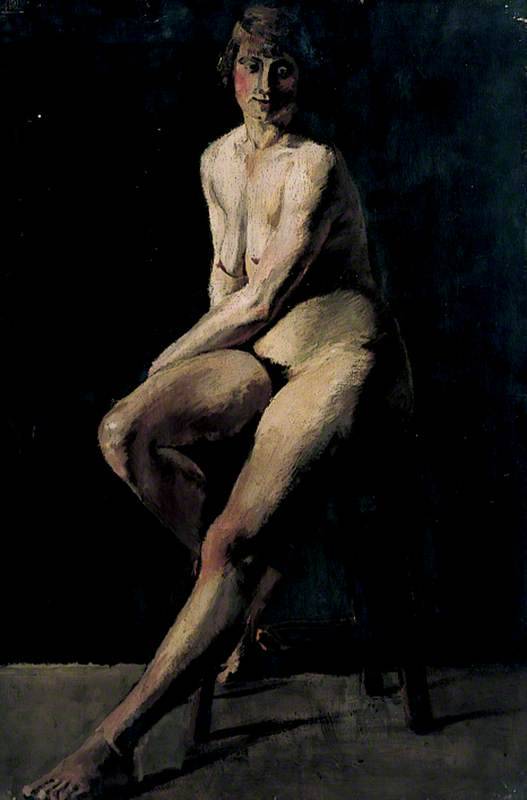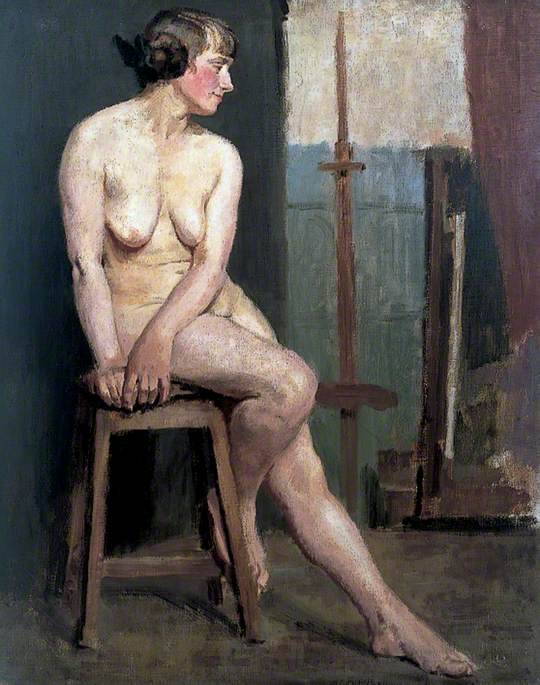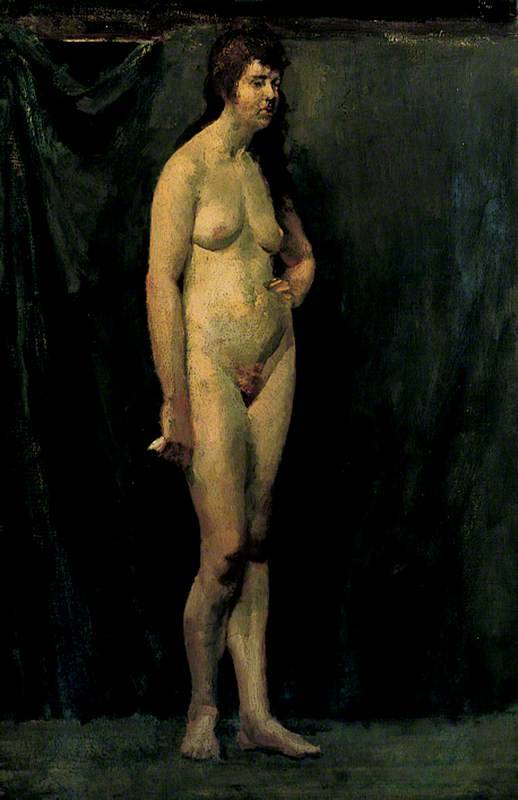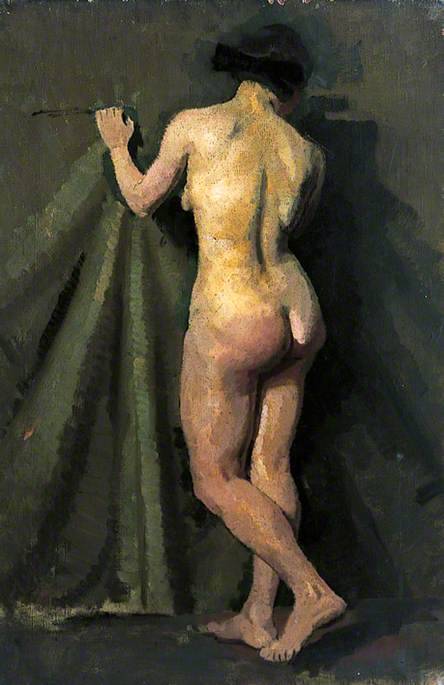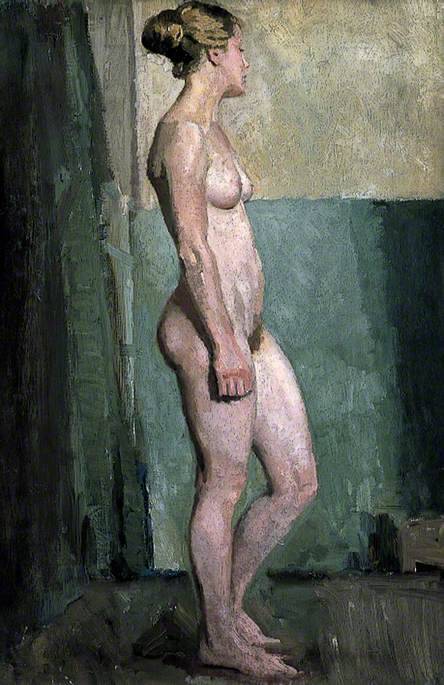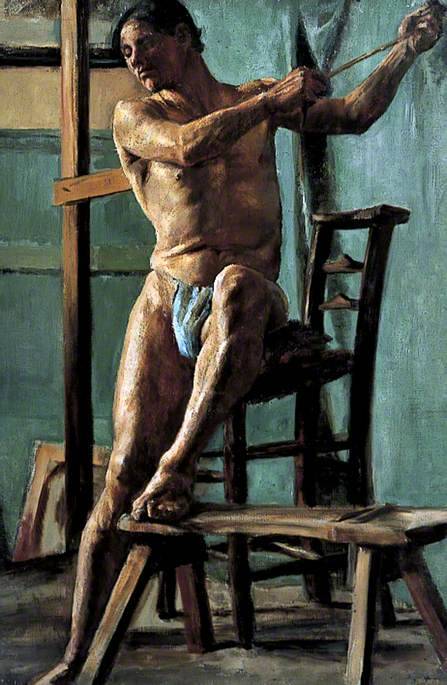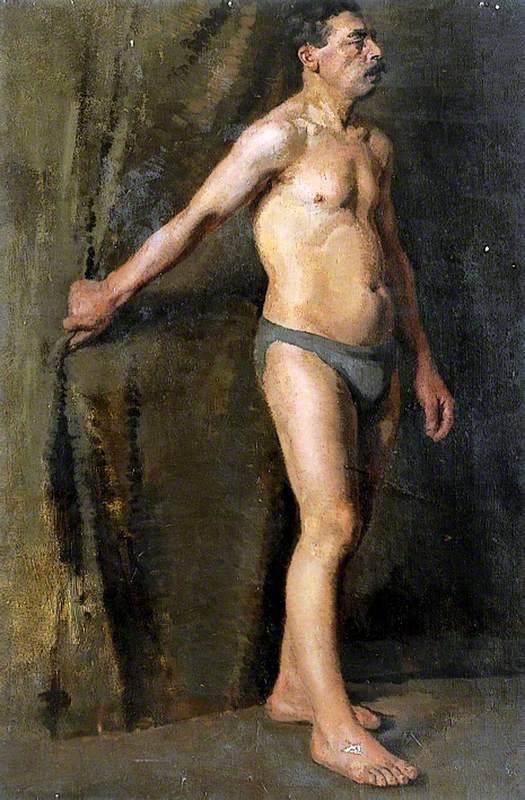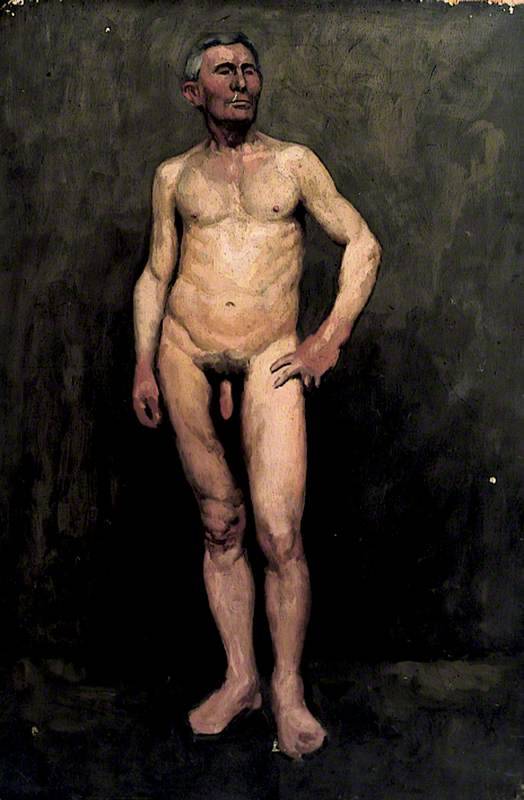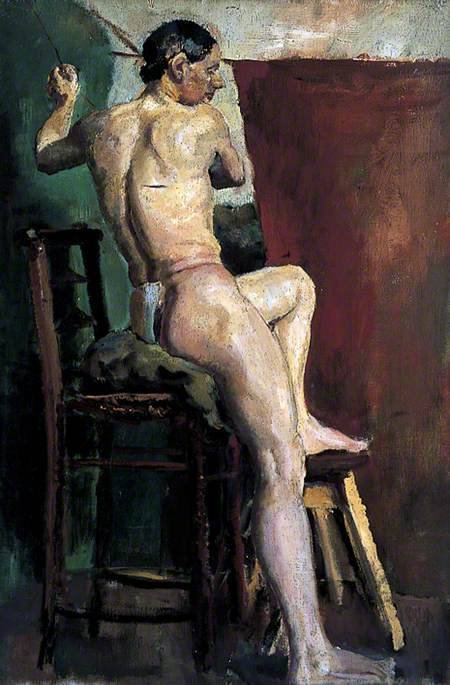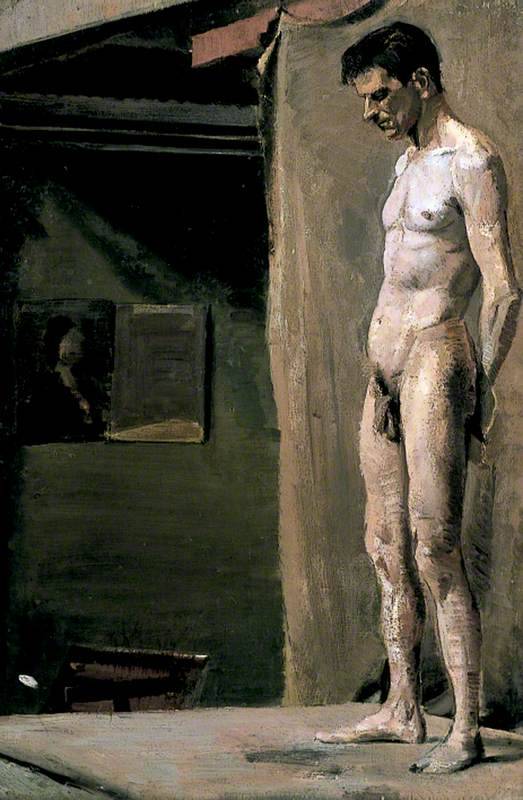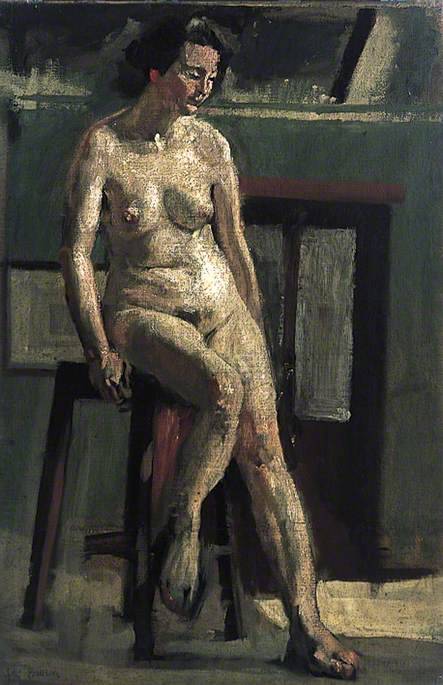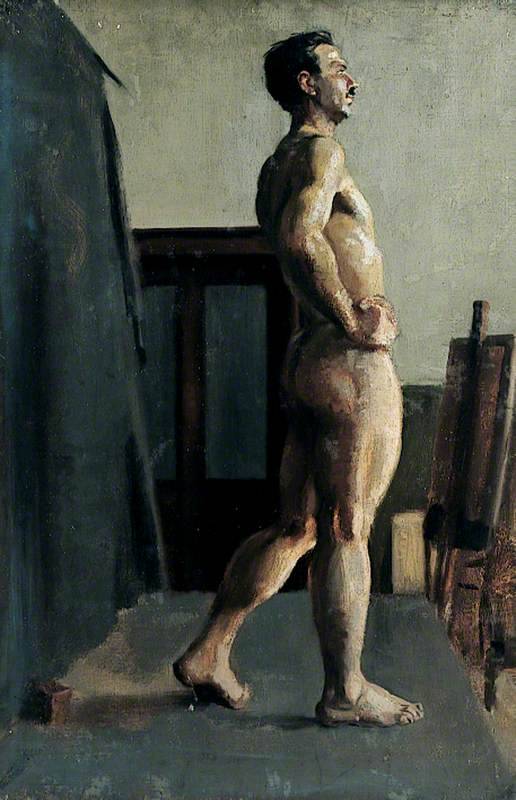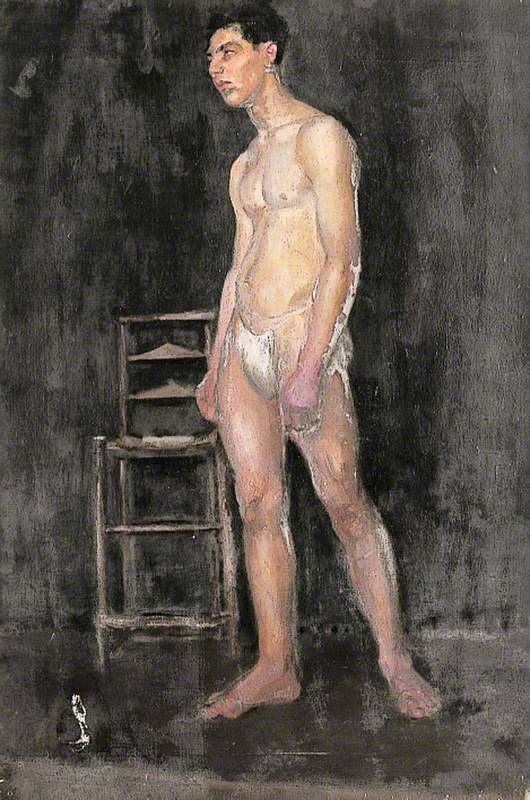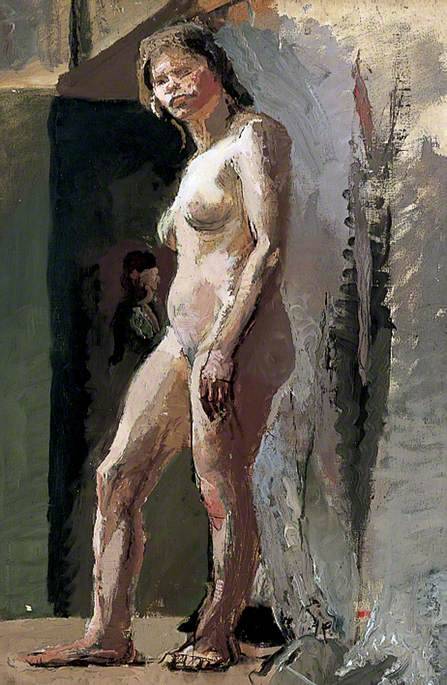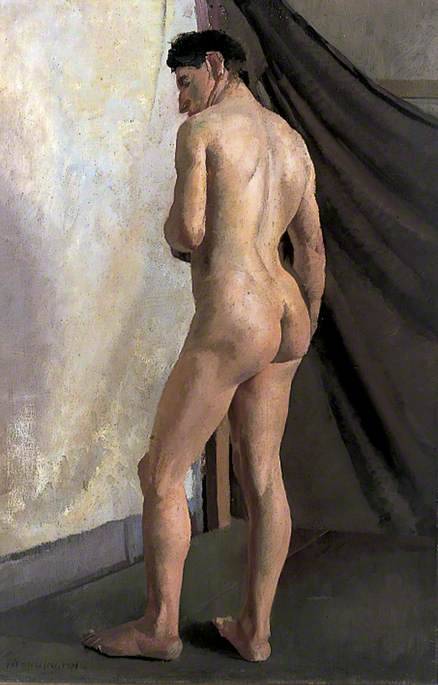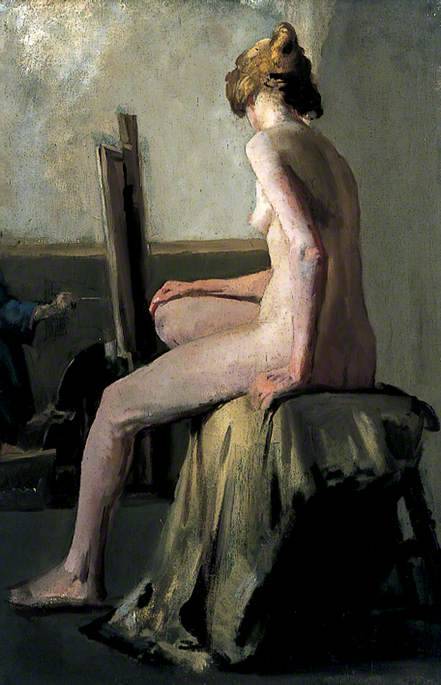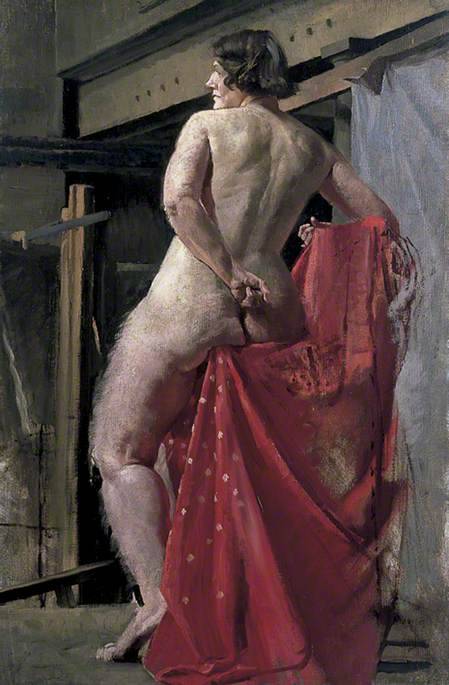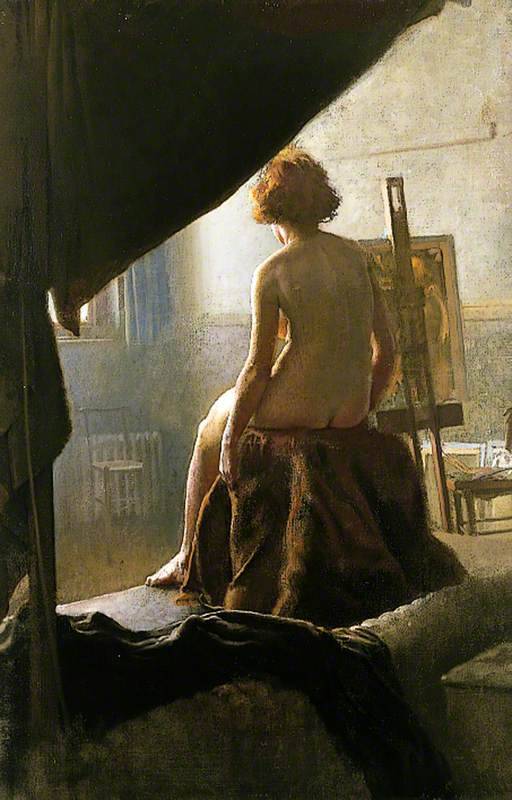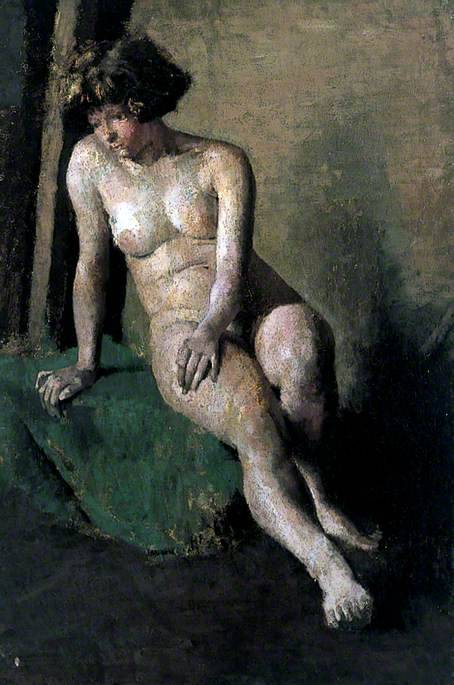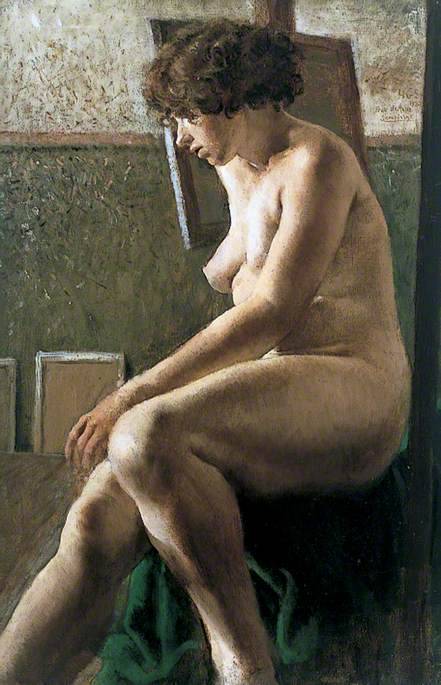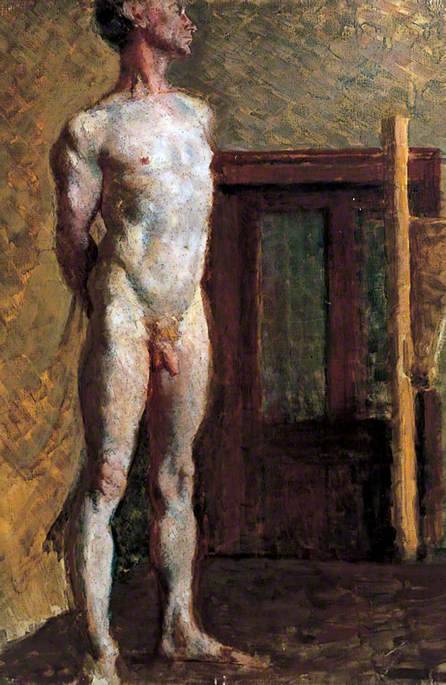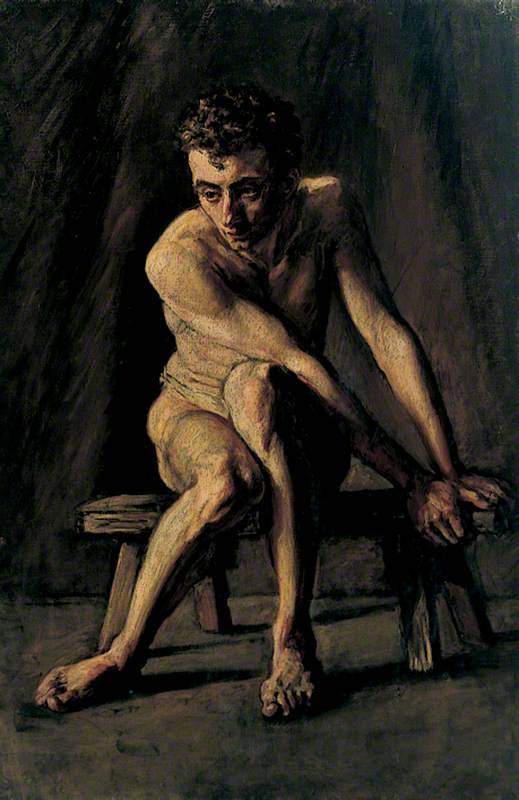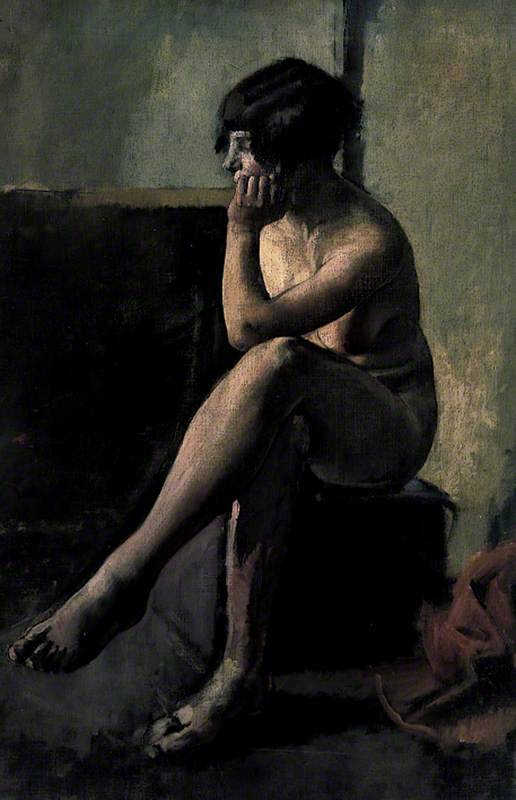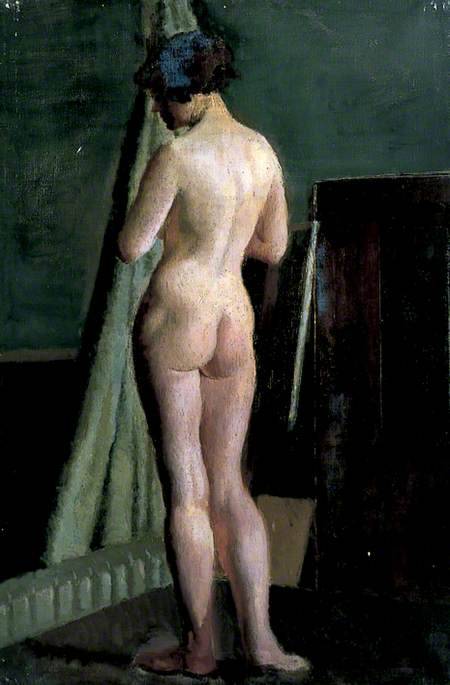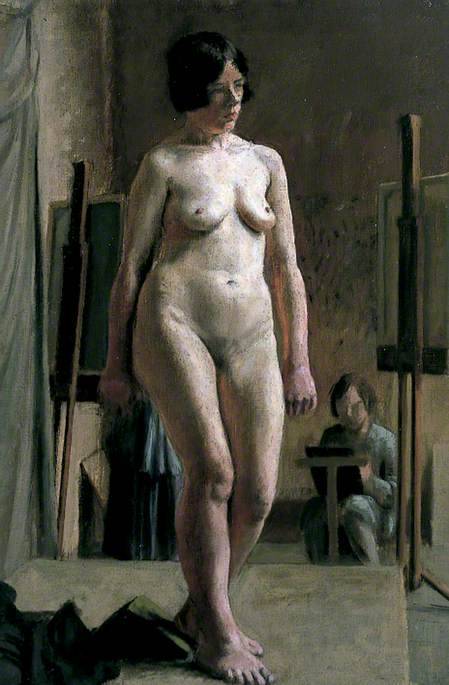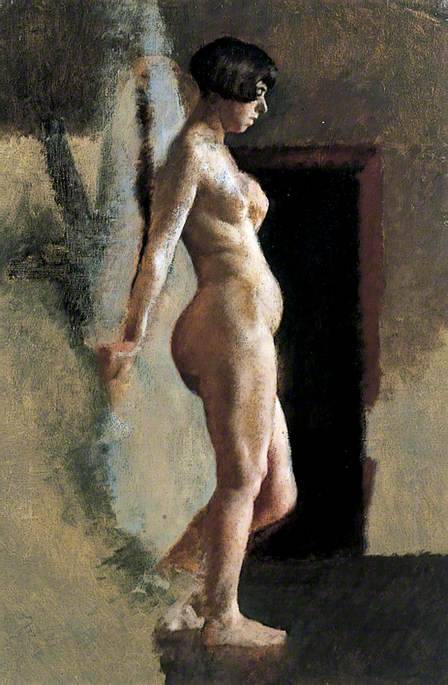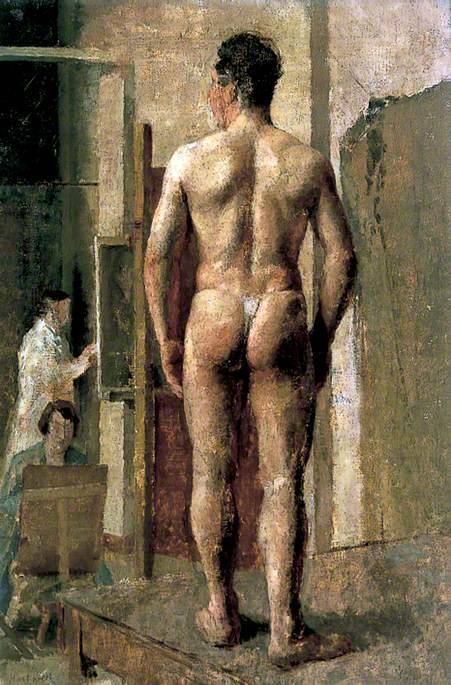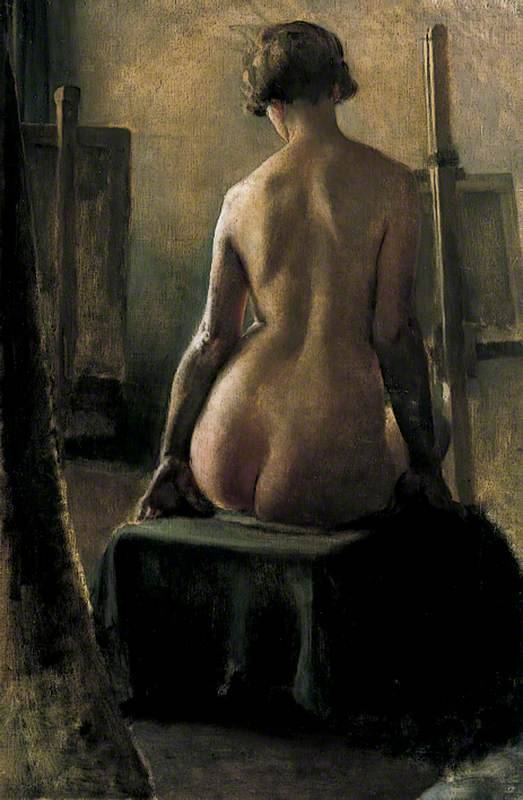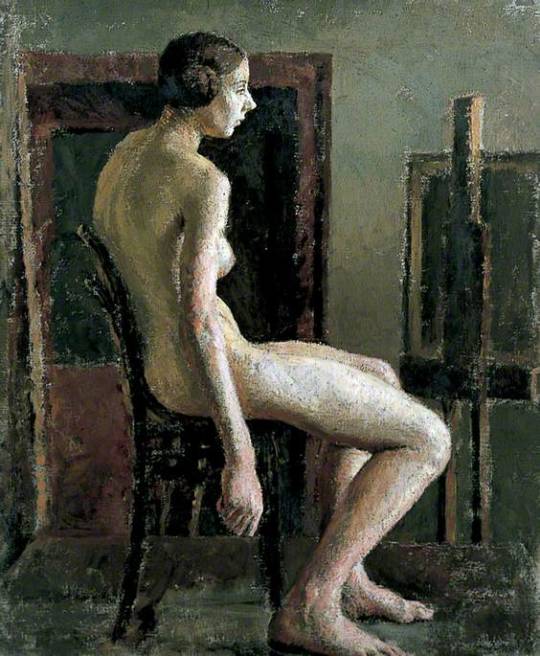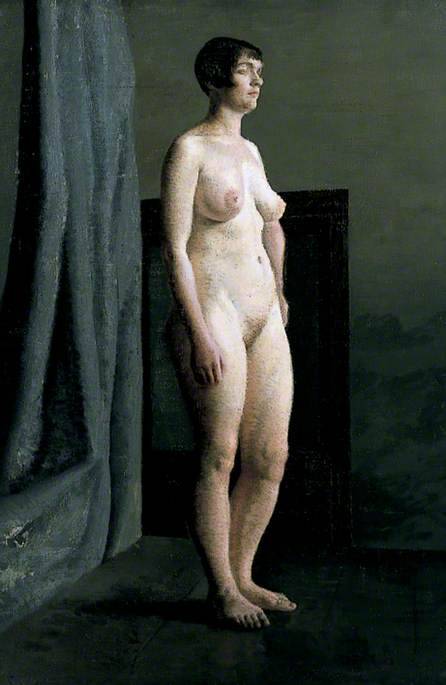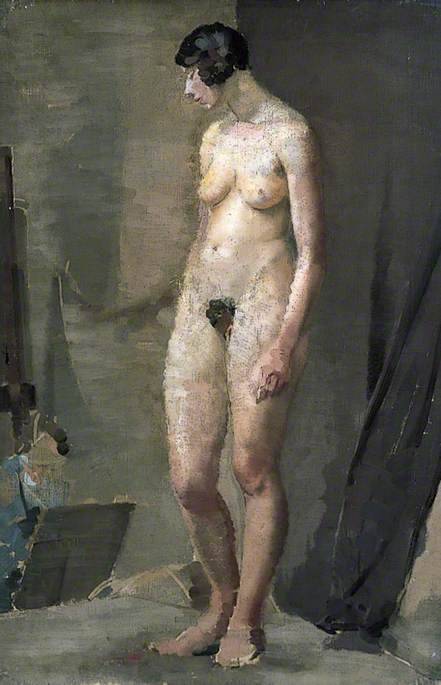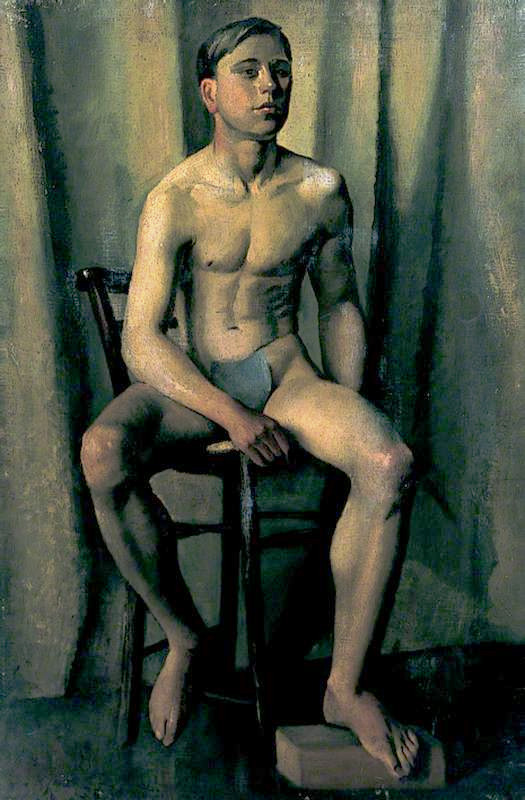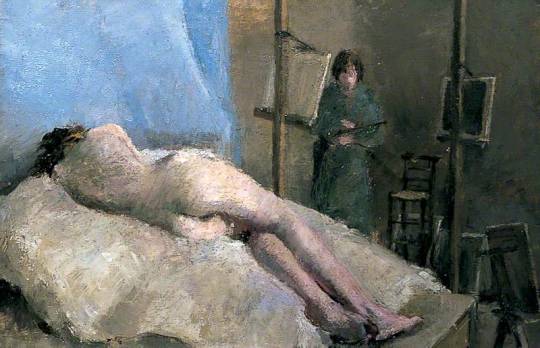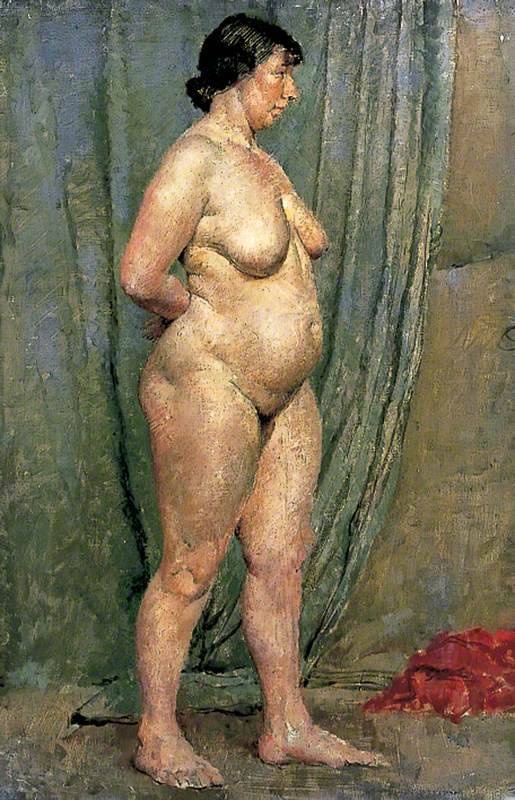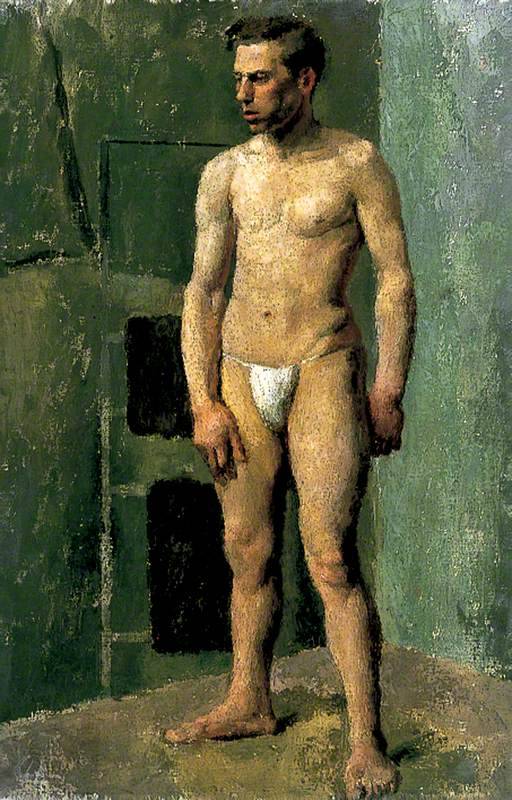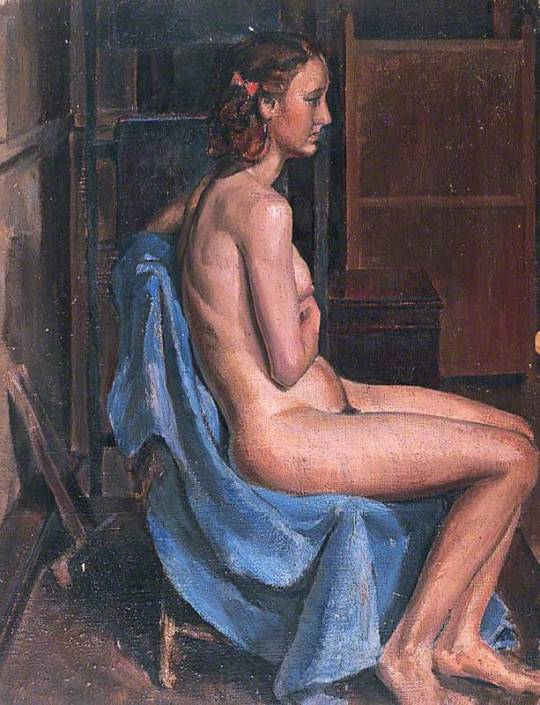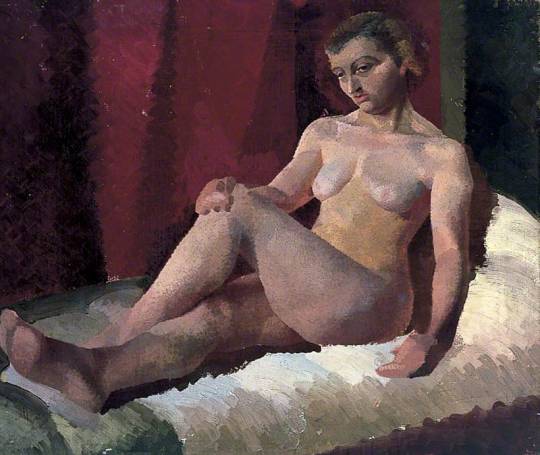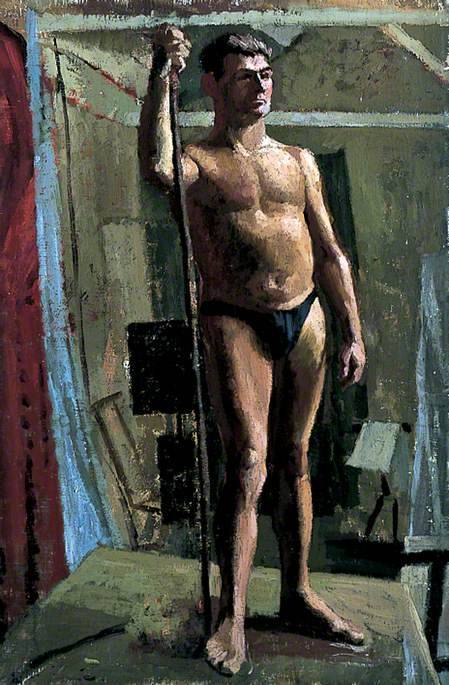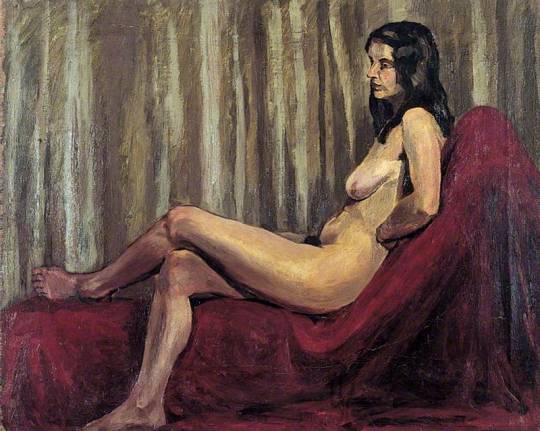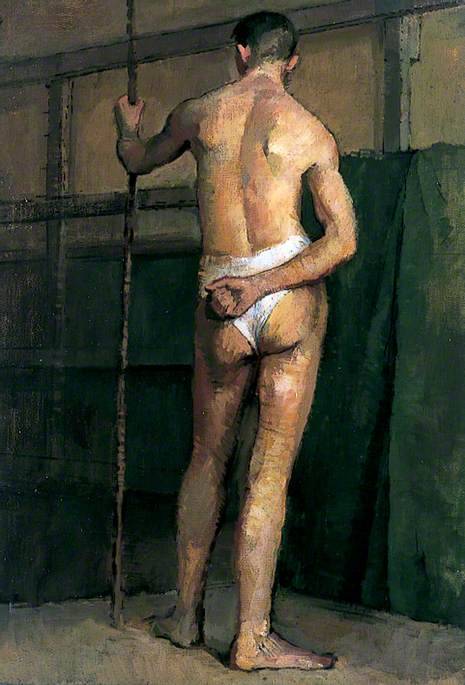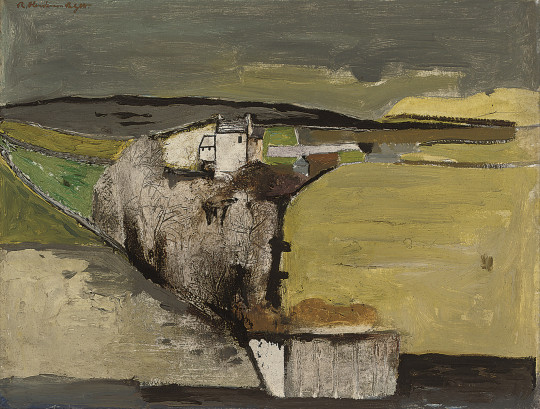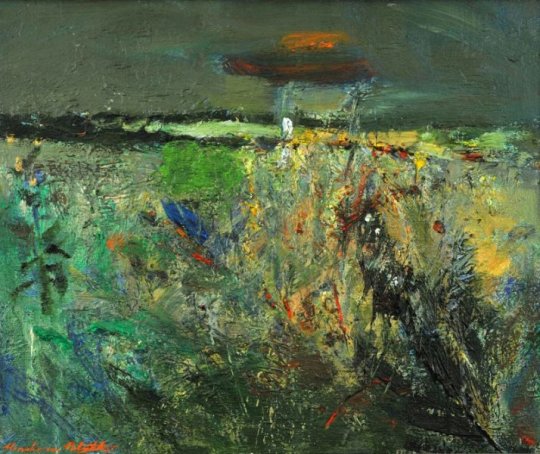The Cornhill Magazine was founded by George Murray Smith in 1859, the first issue in January 1860. It continued until 1975. It was a literary journal with a selection of articles on diverse subjects and serialisations of new novels. From the days when news was slower to make the press and a book was a luxury commodity, these magazines were more of a social service than a magazine is today. Smith hoped to gain some of the same readership enjoyed by All the Year Round, a similar magazine owned by Charles Dickens, and he employed as editor William Thackeray, Dickens’ great literary rival at the time.
The stories were often illustrated and it contained works from some of the foremost artists of the time including: George du Maurier, Edwin Landseer, Frederic Leighton, and John Everett Millais. Some of its subsequent editors included G. H. Lewes, Leslie Stephen, Ronald Gorell Barnes, James Payn, Peter Quennell and Leonard Huxley.
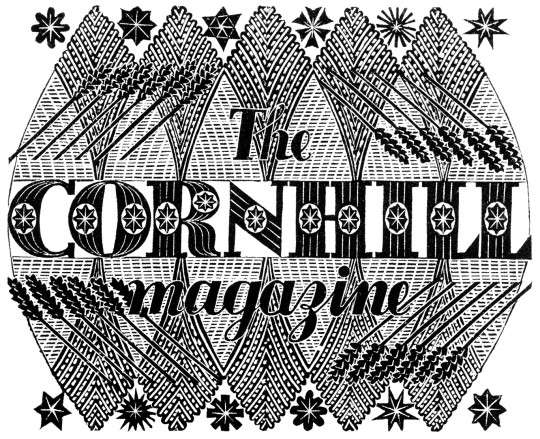
Eric Ravilious – Cornhill Title Block, 1932
When Ravilious first worked for the Cornhill Magazine it was 1932 with the wood engraving above, but in fact the first appearance of the block was in 1954 for the 1,000th issue of the magazine. Why it was not used isn’t clear but the magazine have used it a few times since for anniversaries and sometimes on the title pages.
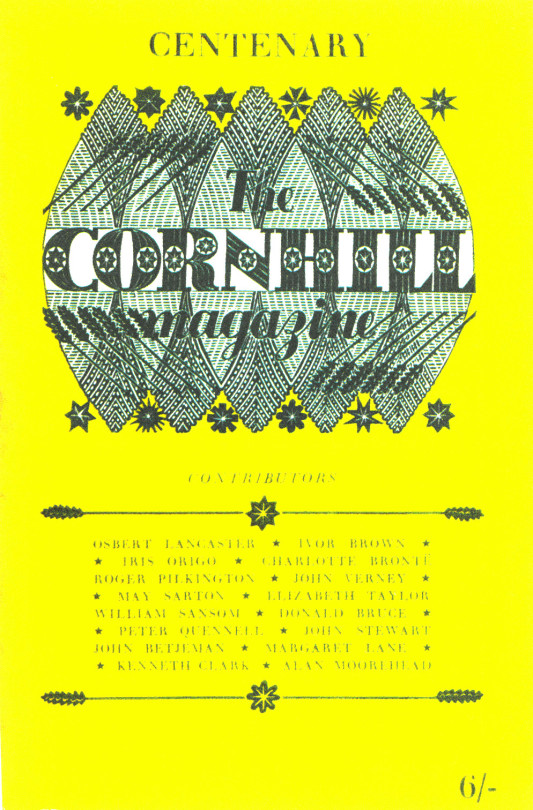
Centenary Edition of the Cornhill magazine, 1954
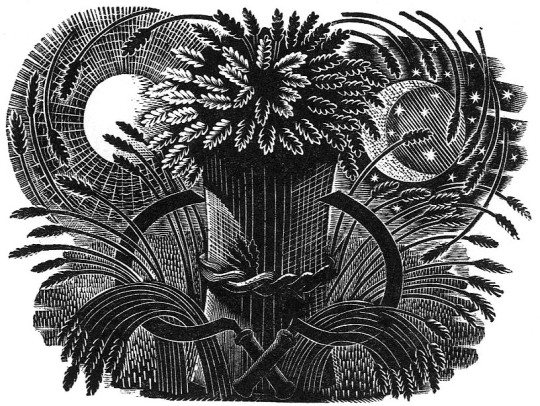
Eric Ravilious – Wheatsheaf for The Cornhill, 1936
The wheat sheaf design was commissioned by a young publisher called John Arnaud Robin Grey (‘Jock’) Murray who was on the staff of the Cornhill Magazine at the time, before going on to publish the likes of John Betjeman, Dervla Murphy and Patrick Leigh Fermor.
The design was to be used as a New Year’s Card, likely for the staff. Details from a letter from Eric to Jock:
I am sending you a print and the block of your wheatsheaf. It is rather more like an Autumn List than a New Year’s card – but perhaps you won’t mind that, and anyway I enjoyed doing the job. I’ll see you tomorrow at the party. †
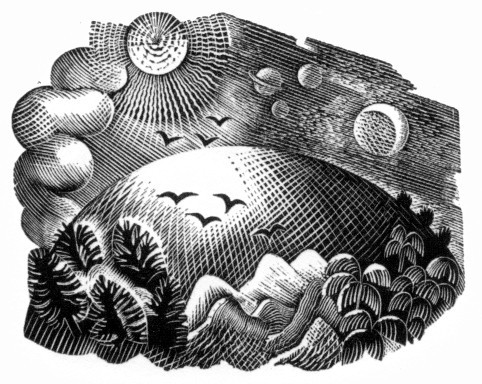
Eric Ravilious – An Athlete, 1933
The moon and sun design features in this work from 1933 for Fifty-Four Conceits a book by Martin Armstrong.
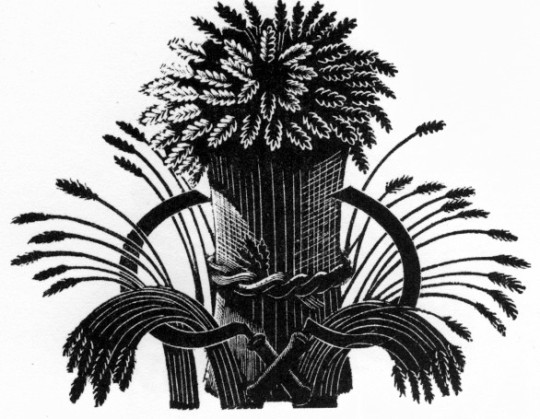
Eric Ravilious – Wheatsheaf for The Cornhill, 1936
In 1936 the block appears again but with the background washed out. Ravilious had painted printers white (for correcting errors in artworks) to edit out the background of the block. The printers then made the block into an electrotype metal block to print with for mass production with those areas cut out of the metal.

Eric Ravilious – Wheatsheaf that he sent to Jock Murray, painted out, 1936

Eric Ravilious – Title-page (Harvest Festival), Wood-engraving for the Cornhill Magazine, 1936
Ravilious was working on the Country Life Cookery Book at the same time as this commission for The Cornhill Magazine in the later part of 1936 and the project overlapped. So when one of the wood engravings was rejected by Jock Murray he used it on the cookery book. I thought this engraving was a bit surreal and over the top until I discovered a drawing of it below.
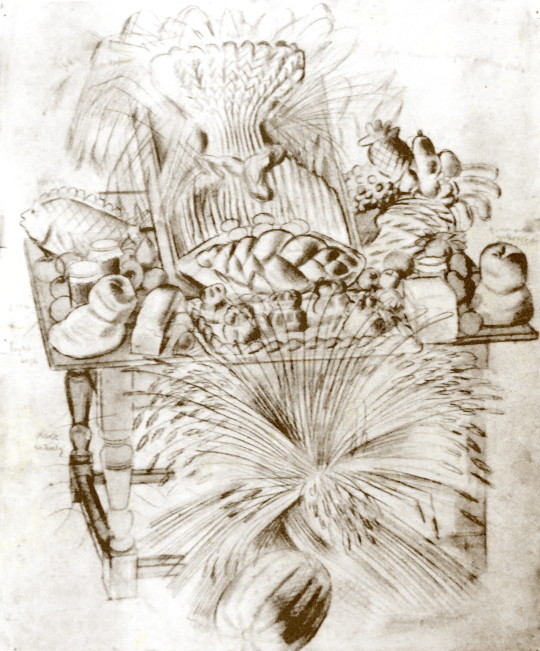
Eric Ravilious – Harvest Festival and Loaves, 1936
I’ve been drawing the bread table in the church – dead and fancy loaves, barley and corn, apples and eggs – and I thought it too beautiful not to place on record. ♠
Having been rejected for one job Ravilious cut away the framed backdrop of the table and submitted the wood-engraving below for the Cookery Book project instead.

Eric Ravilious – Title-page (Harvest Festival), Wood-engraving for the Country Life Cookery Book, 1937
Below is another woodblock based on the same image made for The Writings of Gilbert White of Selborne in 1938. It’s a new version and not an edited restrike. Likely cut in 1937 as the job was commissioned in May of that year and the book published in 1938.
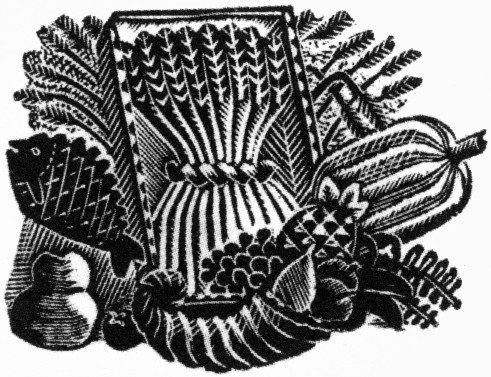
Eric Ravilious – (Harvest Festival), Wood-engraving for The Writings of Gilbert White of Selborne in 1938
One of the commissions for The Cornhill Ravilious got was a Spring and Autumn woodblocks. Below is the Spring wood-engraving looking like an explosion of nature with a Cuckoo in the centre. It was used on compliment slips.
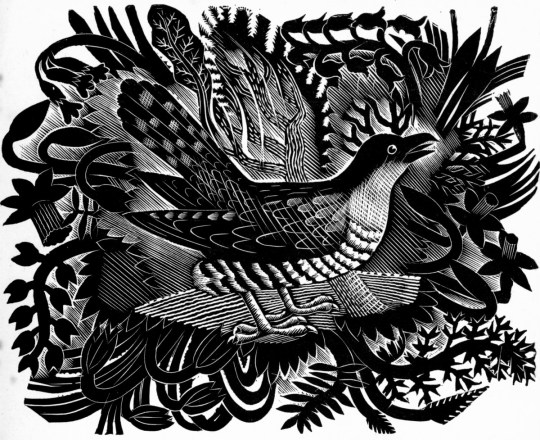
Eric Ravilious – Cuckoo
The same Cuckoo can be seen in the Gilbert White book again on the woodcut in Volume II on p243. To the bottom left corner.
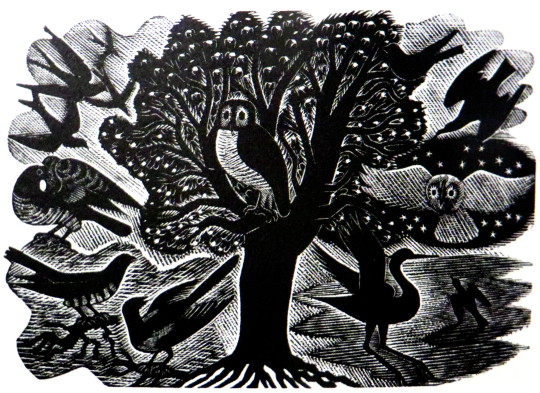
Eric Ravilious – Requirements of an Ornithologist, 1938
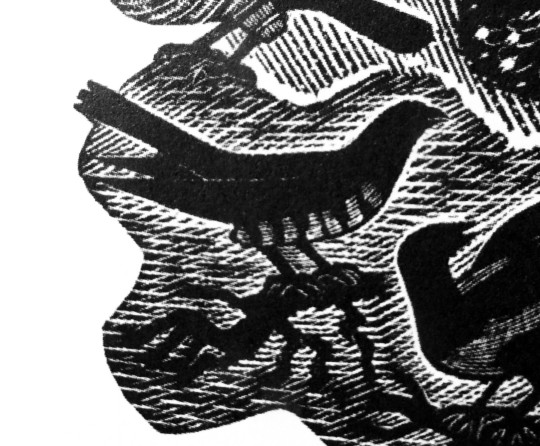
Eric Ravilious – Requirements of an Ornithologist, 1938 (detail)
Below is a woodcut for the four seasons. Holly for winter, bulb-flowers for spring, under a rose for summer and a selection of leaves for autumn.
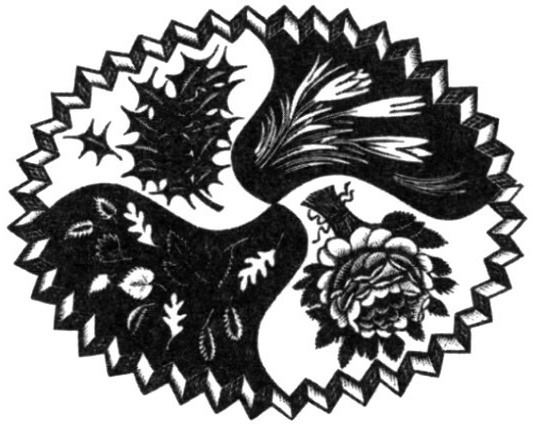
Eric Ravilious – Four Seasons, 1932
In a letter from Ravilious to Jock Murray, 7 January 1932:
I am so glad you like the design for your Quarterly List here is the block with a few amendments. I have made the border lighter as you suggested, and I think that was a good idea. †
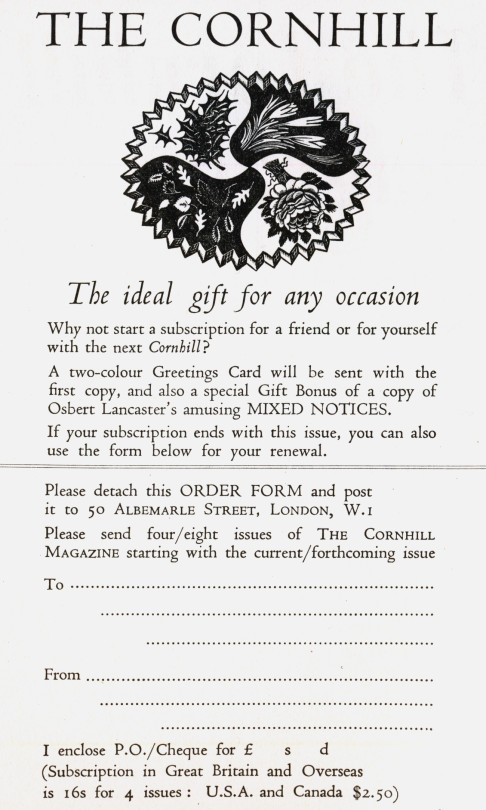
The wood engravings were used in black for subscription notices inside the magazine and in colour in Greetings Cards when one subscribed to the magazine as noted in the advert above and pictured below. The rose was presumably uppermost in the summer with warm red and the holly in the winter in a cool blue.
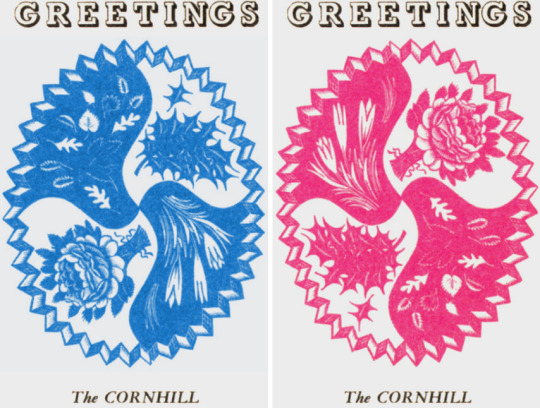
Cornhill Magazine Greetings Cards
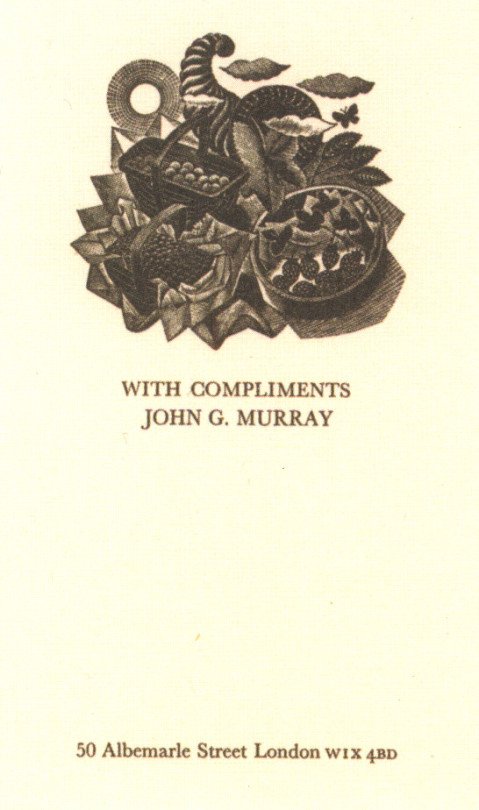
Eric Ravilious – Compliment Slip for the Cornhill Magazine using ‘Autumn Fruits’, 1936
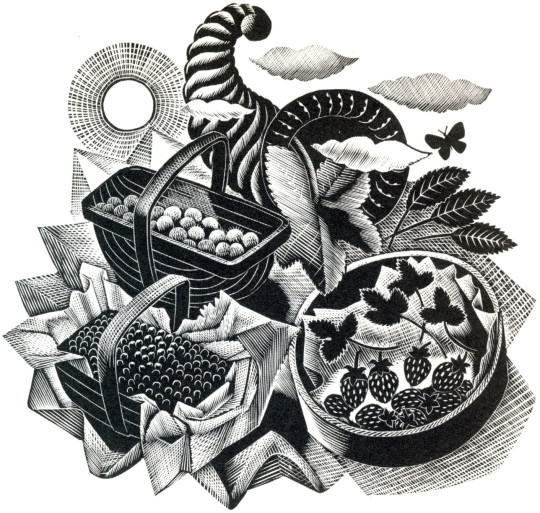
Eric Ravilious – Autumn Fruits, 1936
The wood-engraving above, Autumn Fruits, would have been copied from the painting below, and in the printing process it appears reversed. Ravilious as we know was a great recycler of his work.
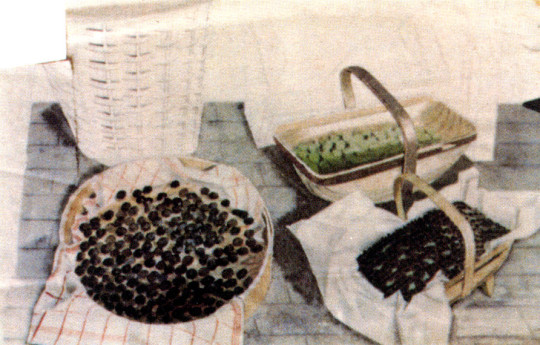
Eric Ravilious – Trugs with Fruit, 1936
The same trug appears in the wood engraving for the Country Life Cookery Books vignette ‘April’. The job came at the same time as the Cornhill Magazine commission. The watercolour of Trugs of Fruit above has the same trug in the ‘April’ wood engraving. The fruit is presumed to be full of redcurrants as it is also next to mint and a lamb.
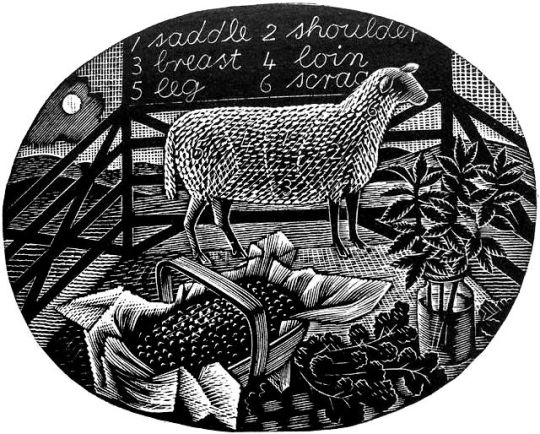
Eric Ravilious – April, Wood-engraving for the Country Life Cookery Book, 1937
The cornucopia was also a popular device used by Ravilious and appears in the ‘Autumn Fruits’ wood-engraving / compliment slip for Murray. It too was recycled into a wood engraving for the Country Life Cookery Book for ‘July’.

Eric Ravilious – July, Wood-engraving for the Country Life Cookery Book, 1937
♠ Eric Ravilious to Helen Binton – 6th October, 1936
† Jeremy Greenwood – Eric Ravilious Wood Engravings, 2008
